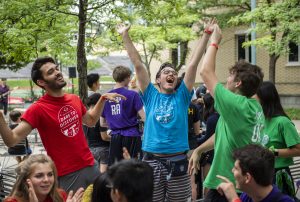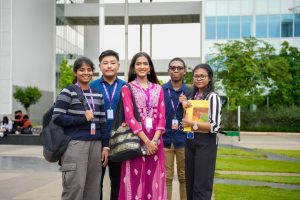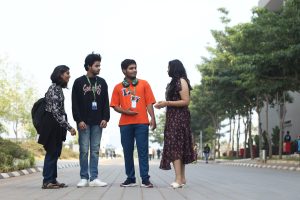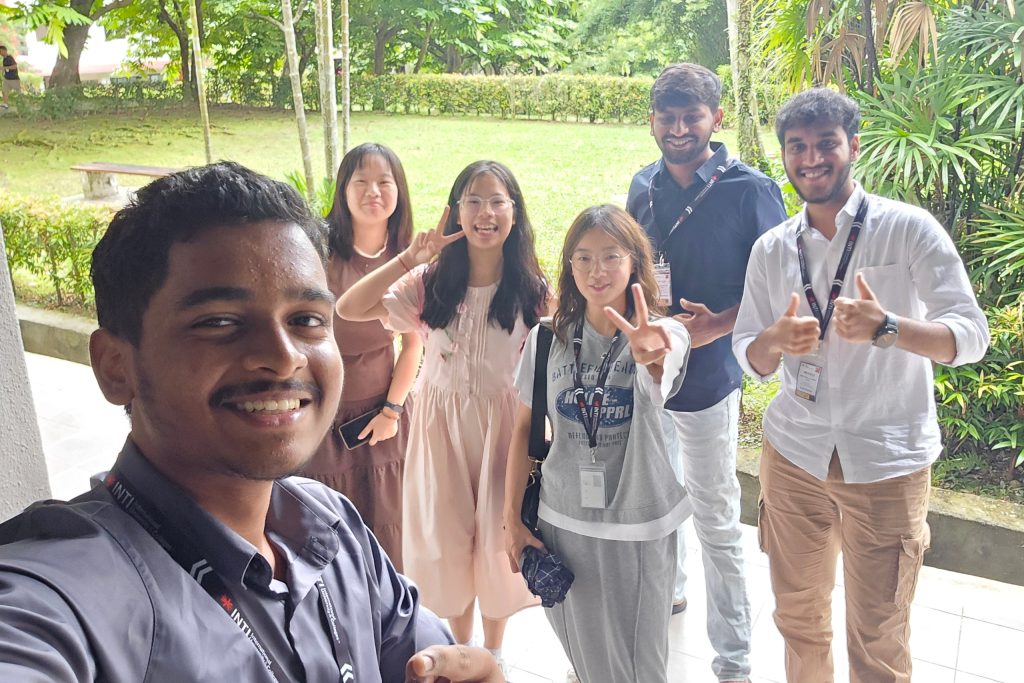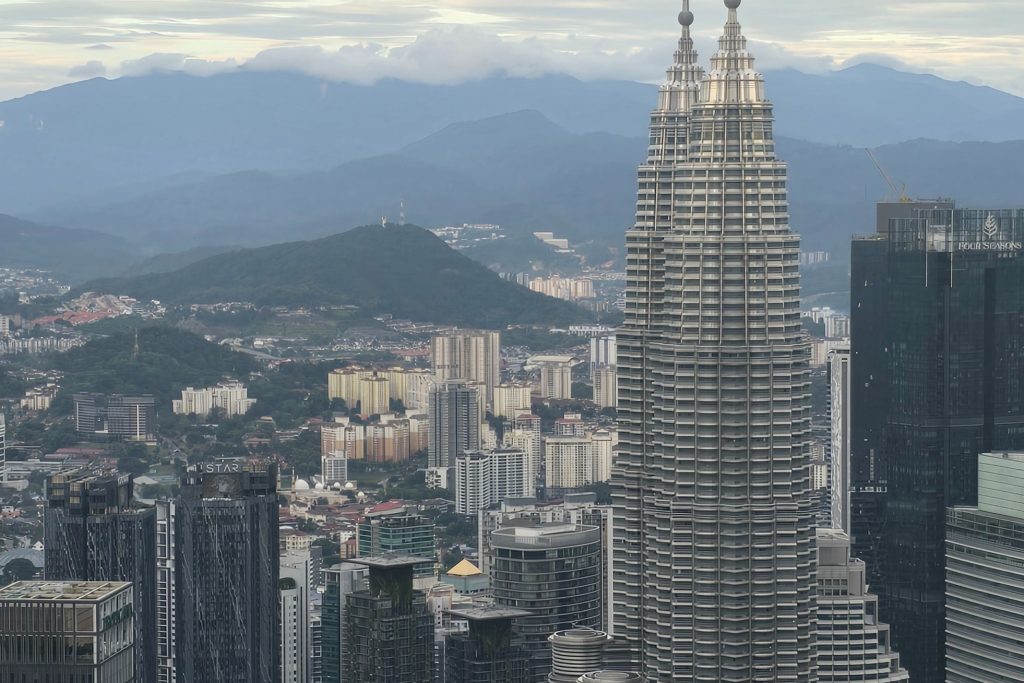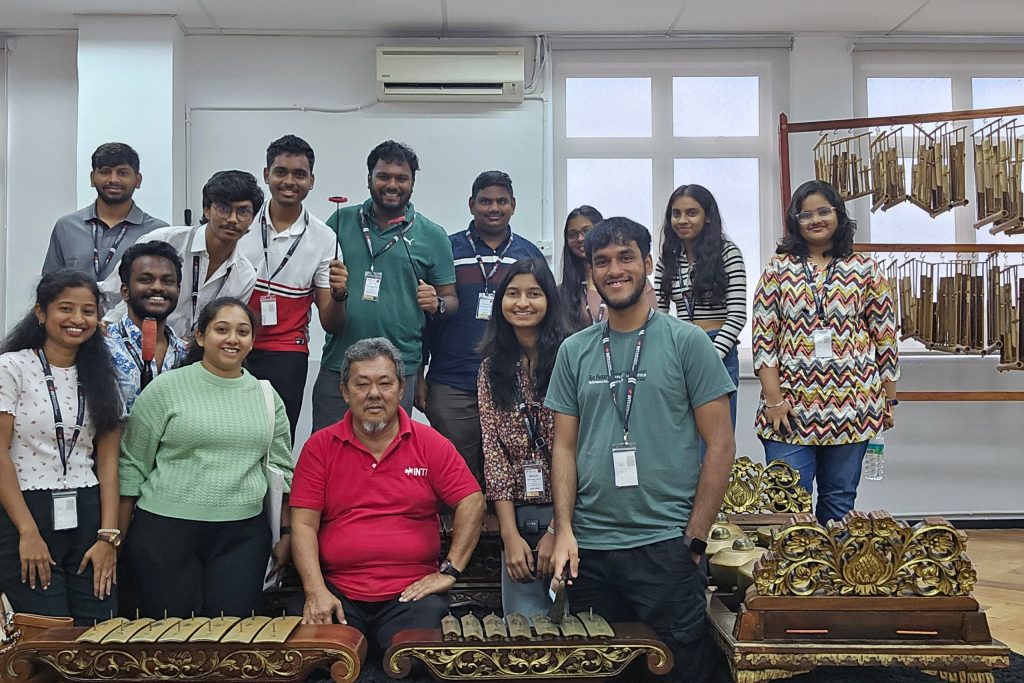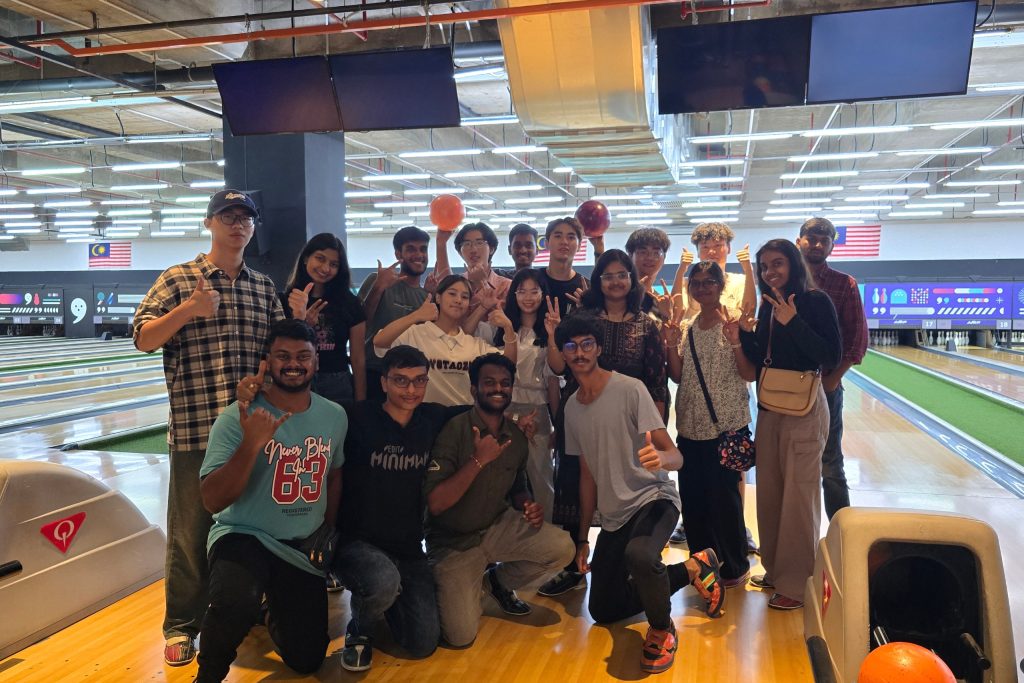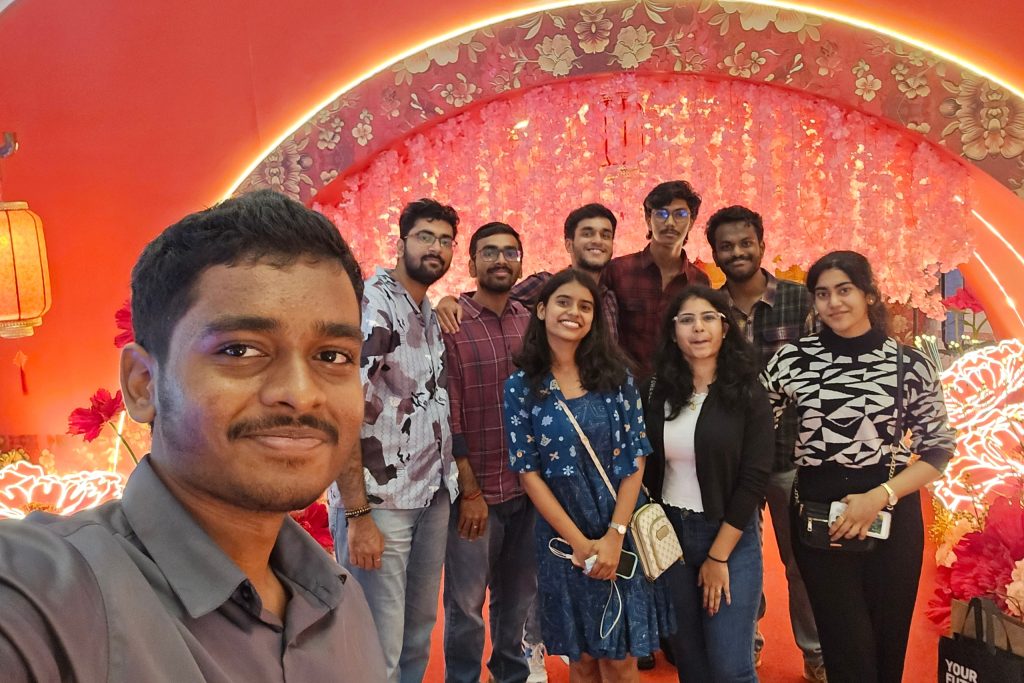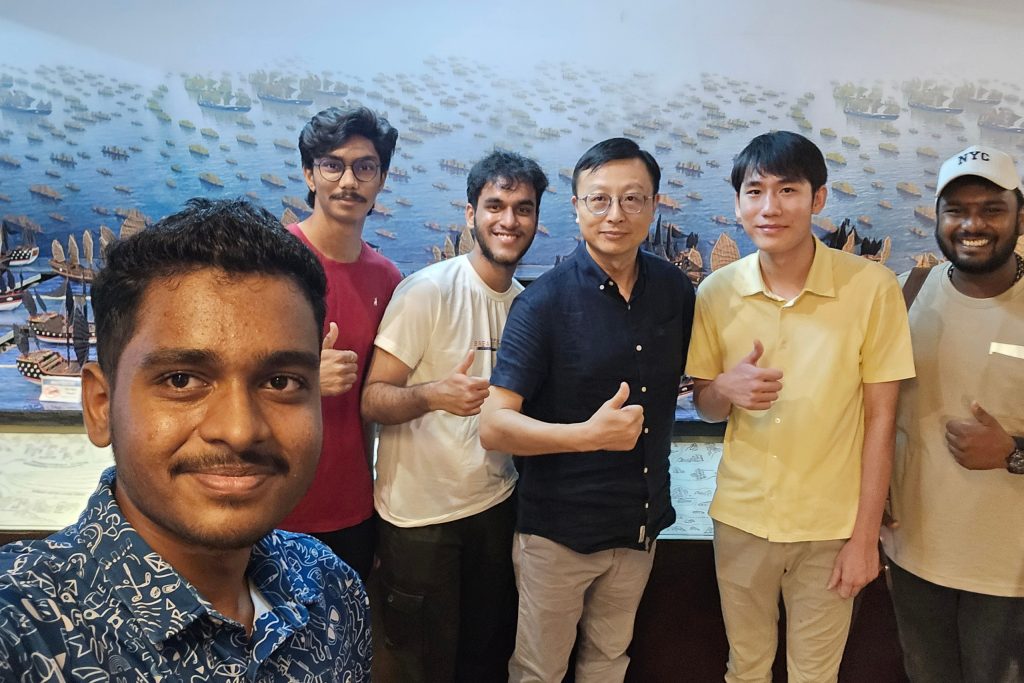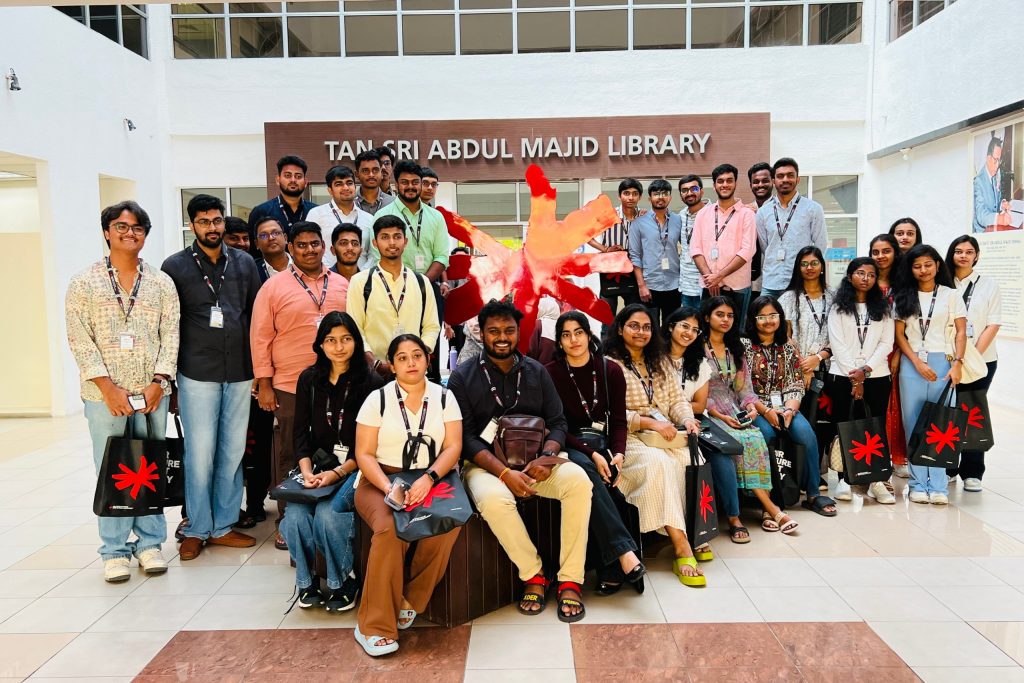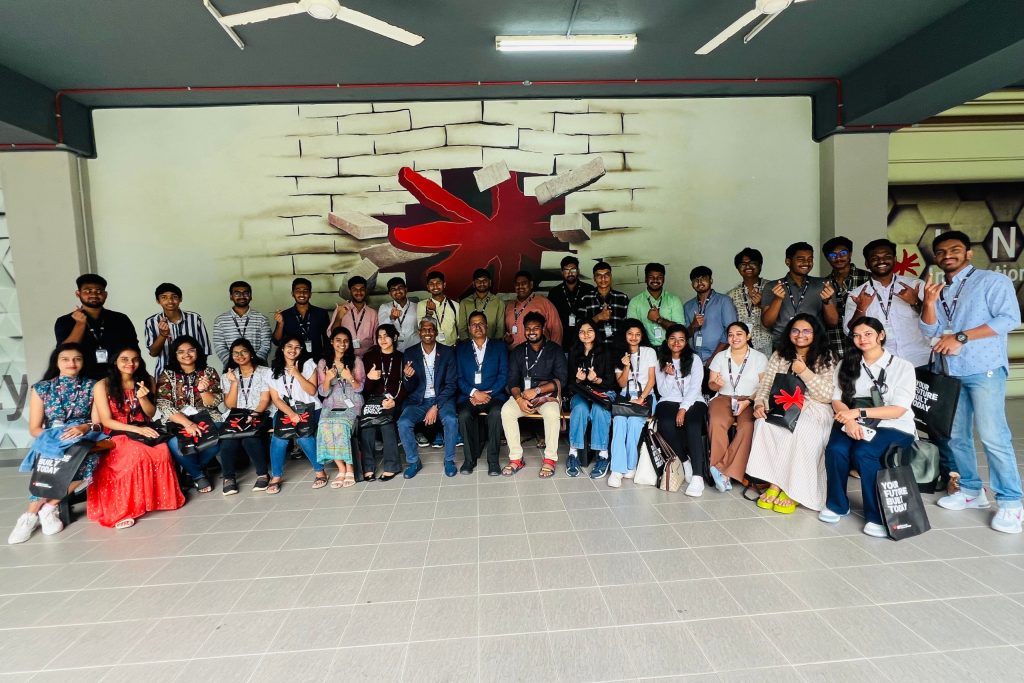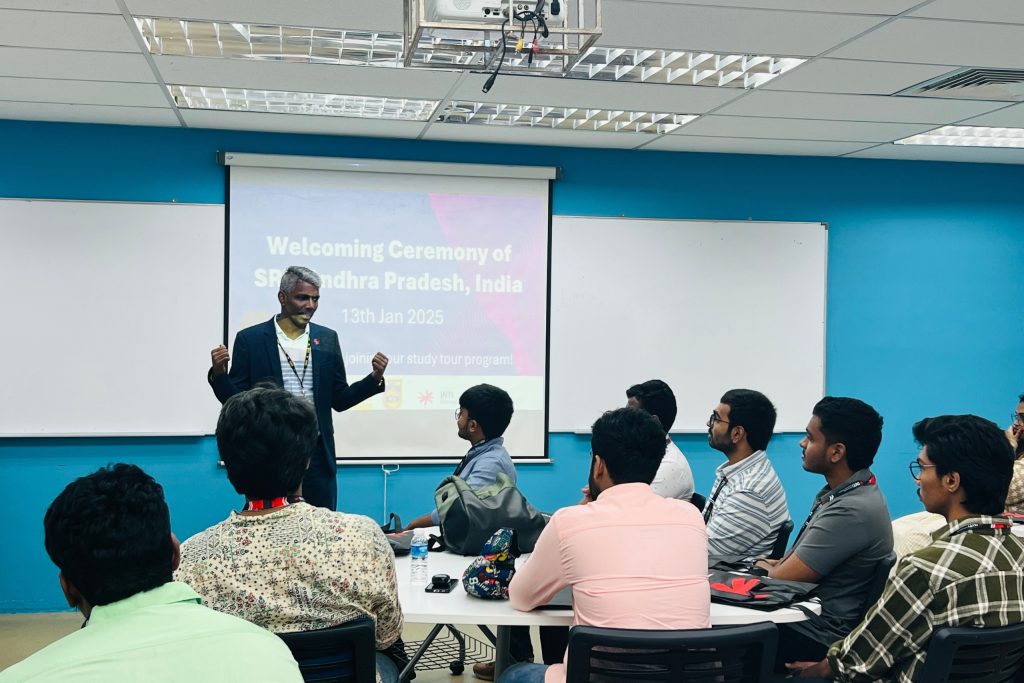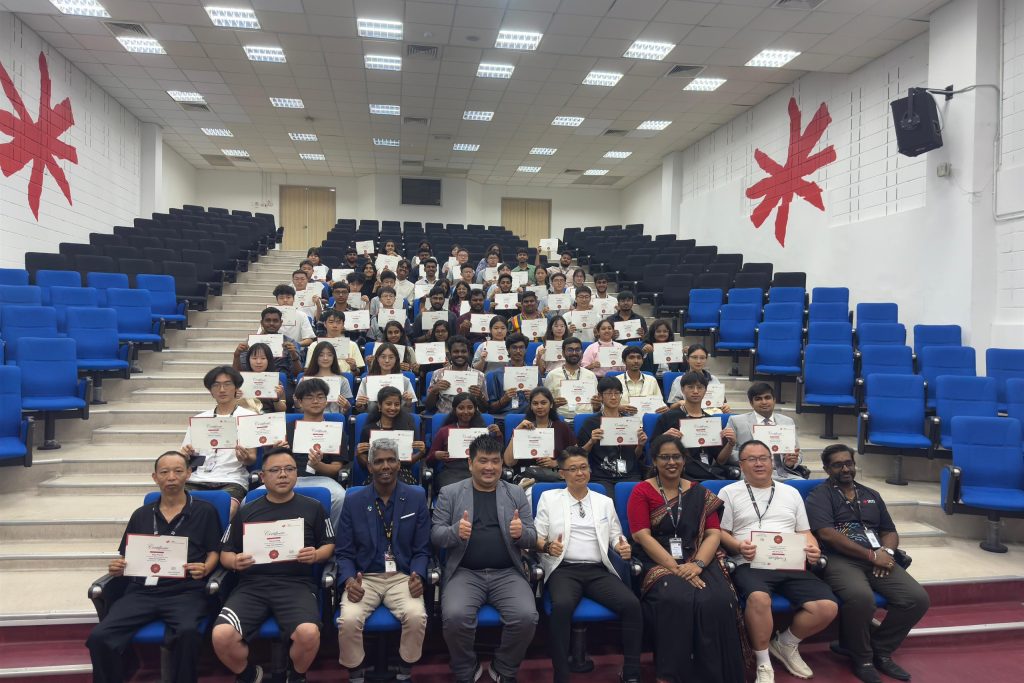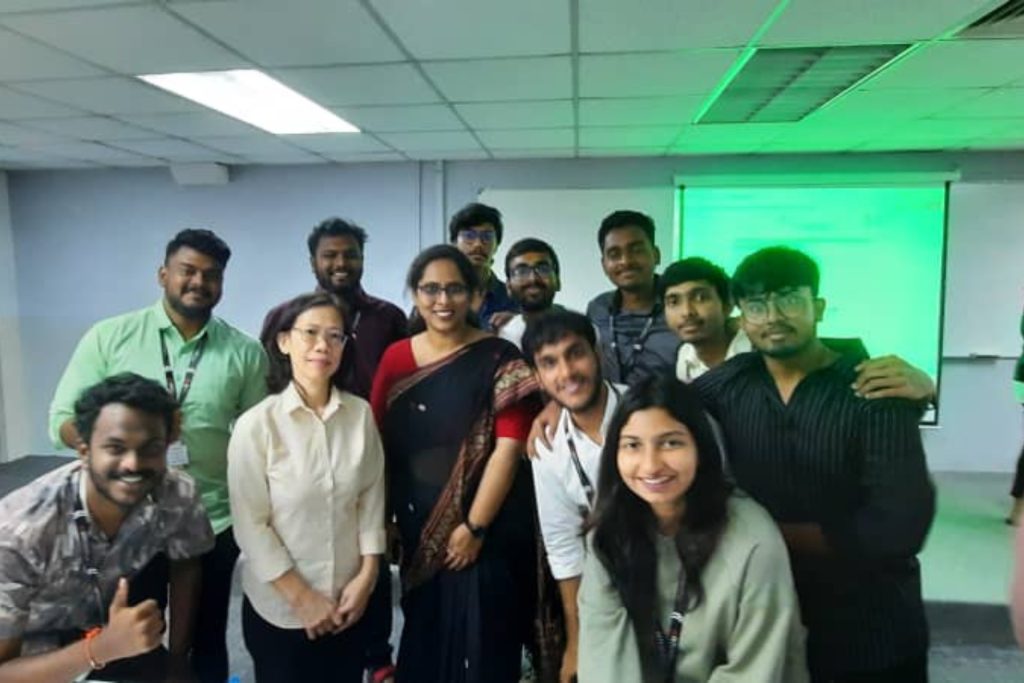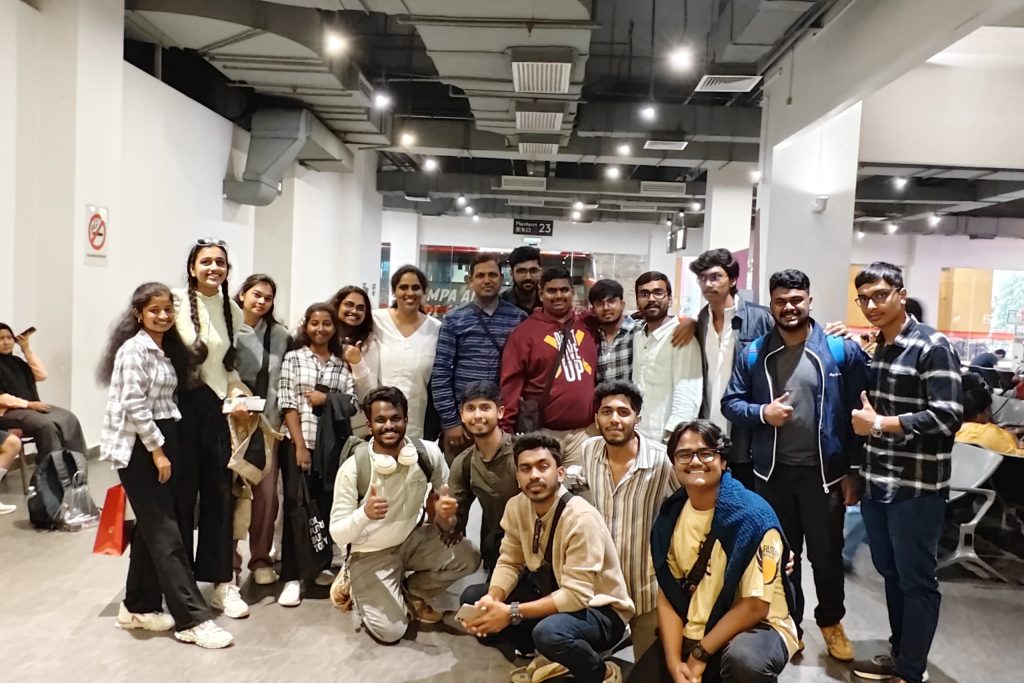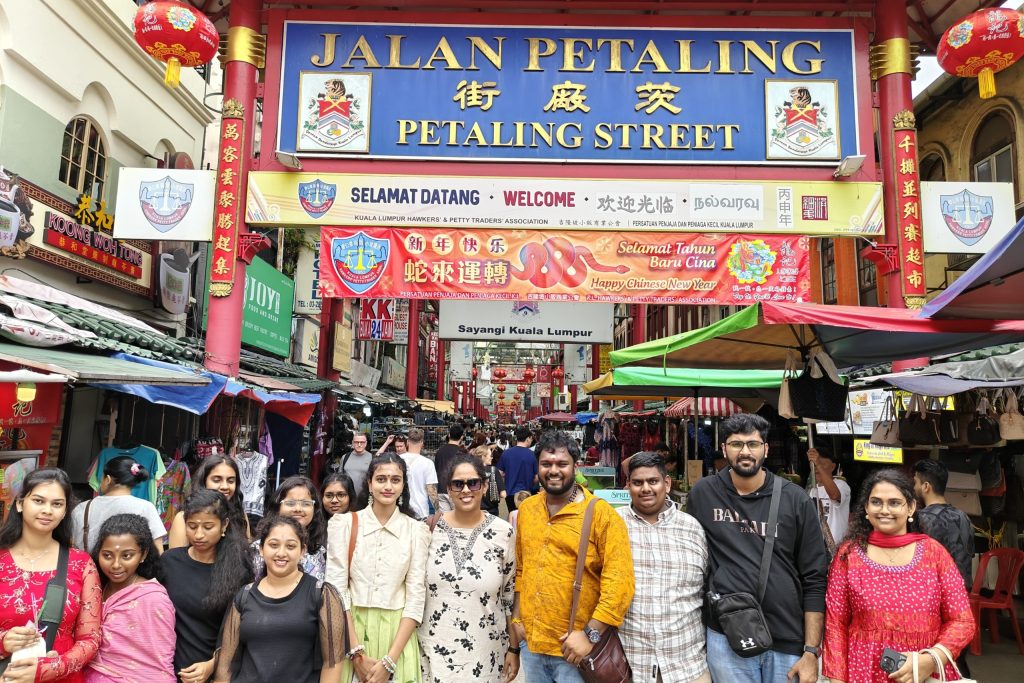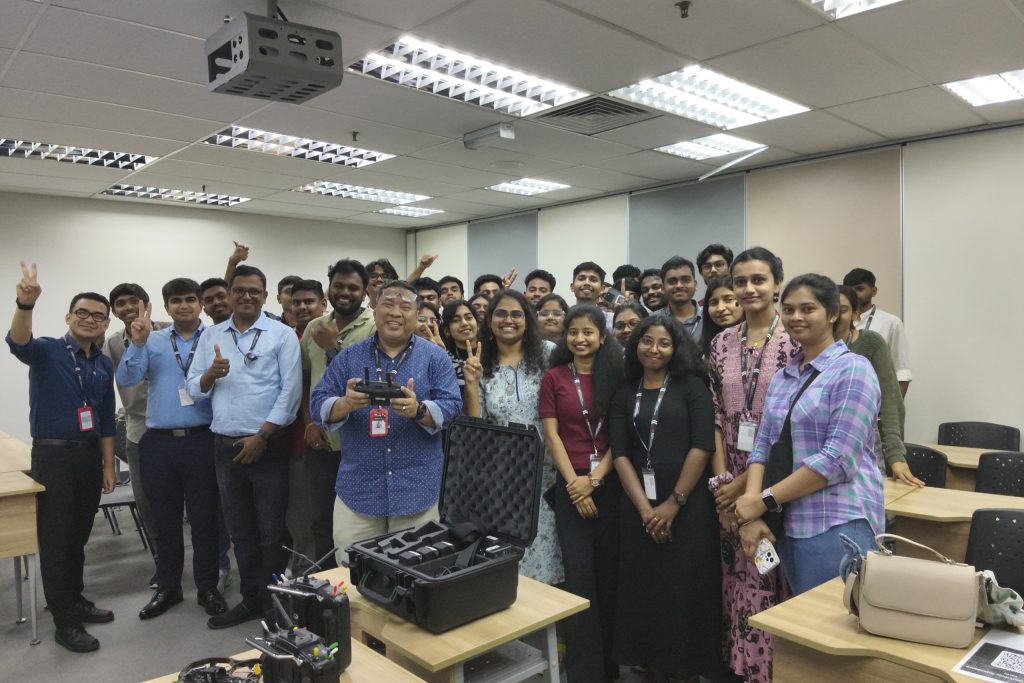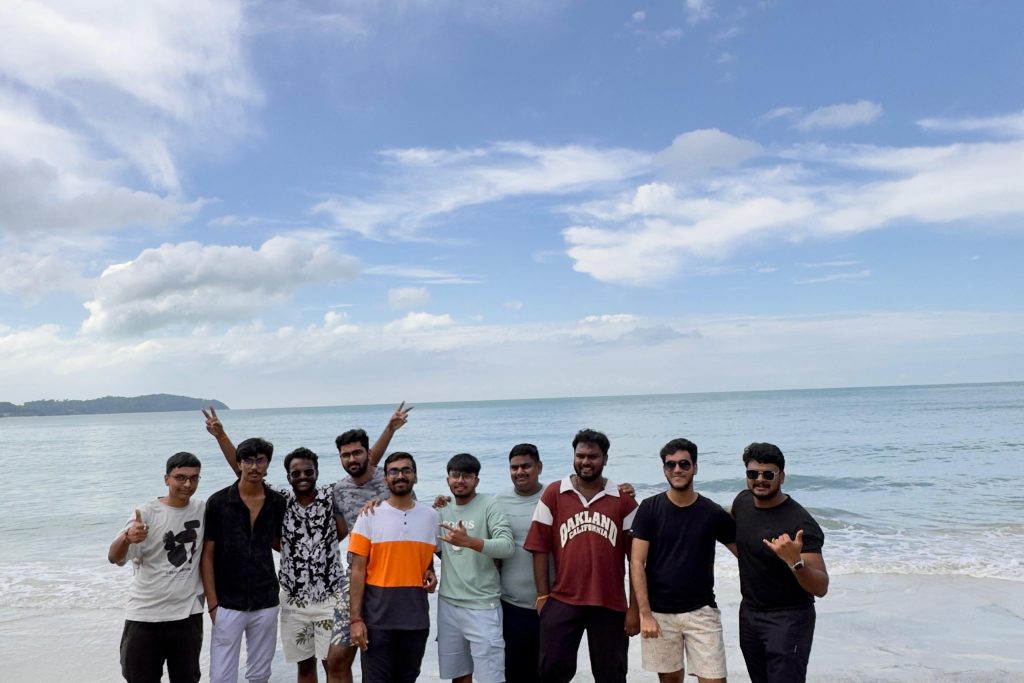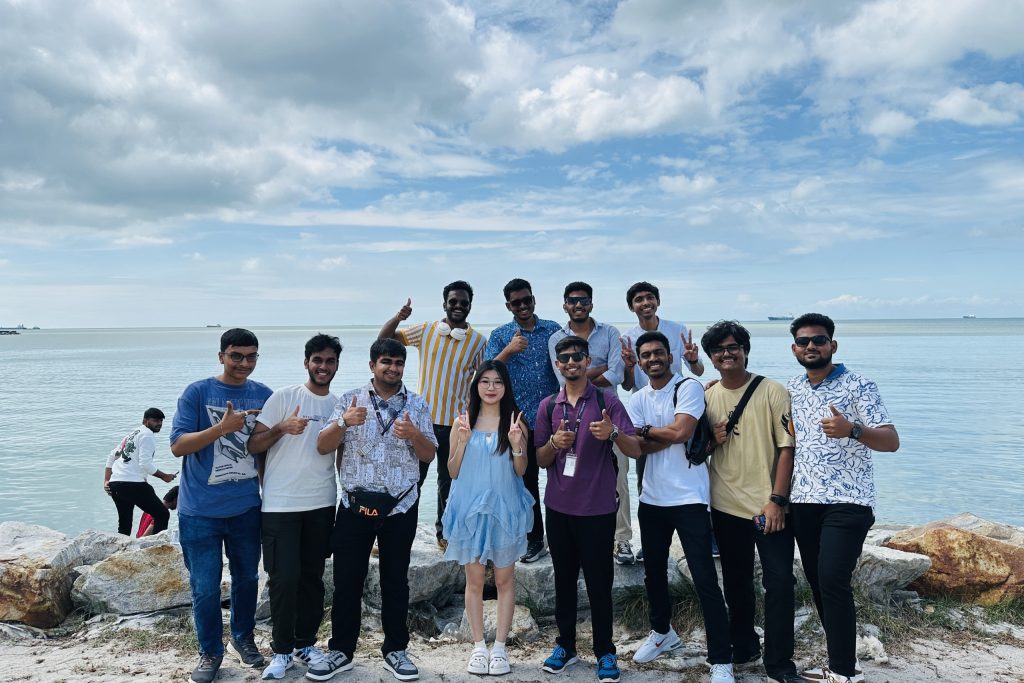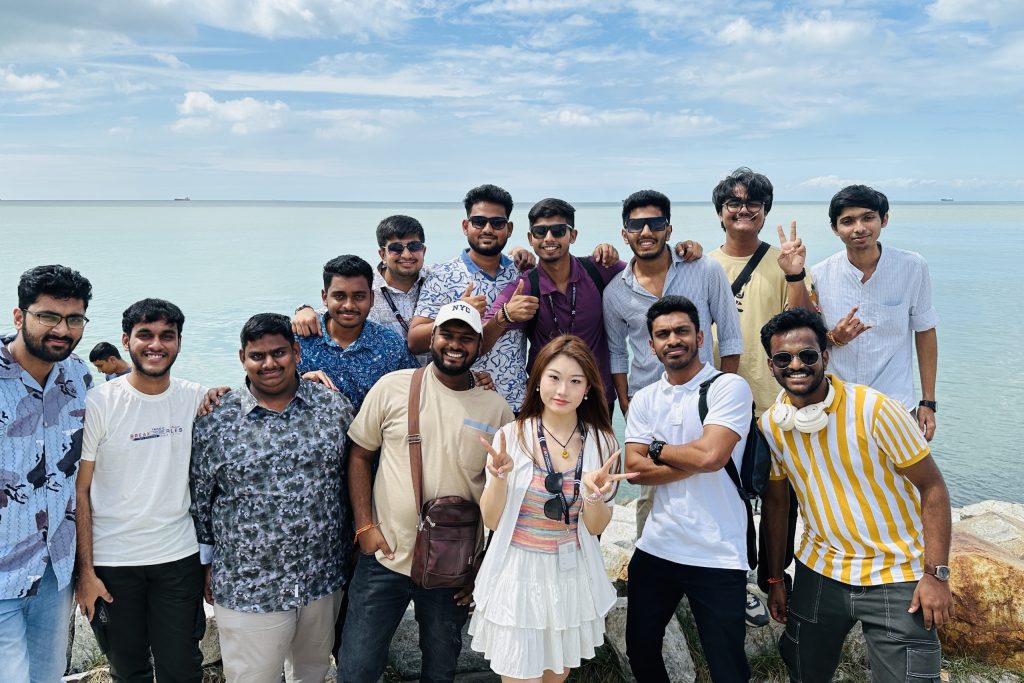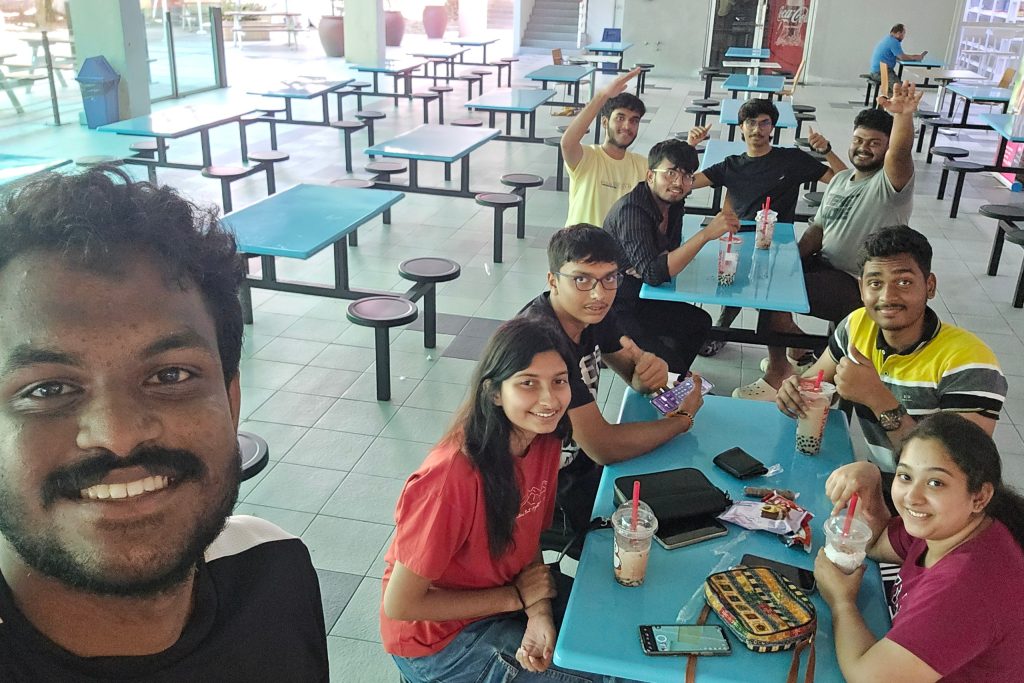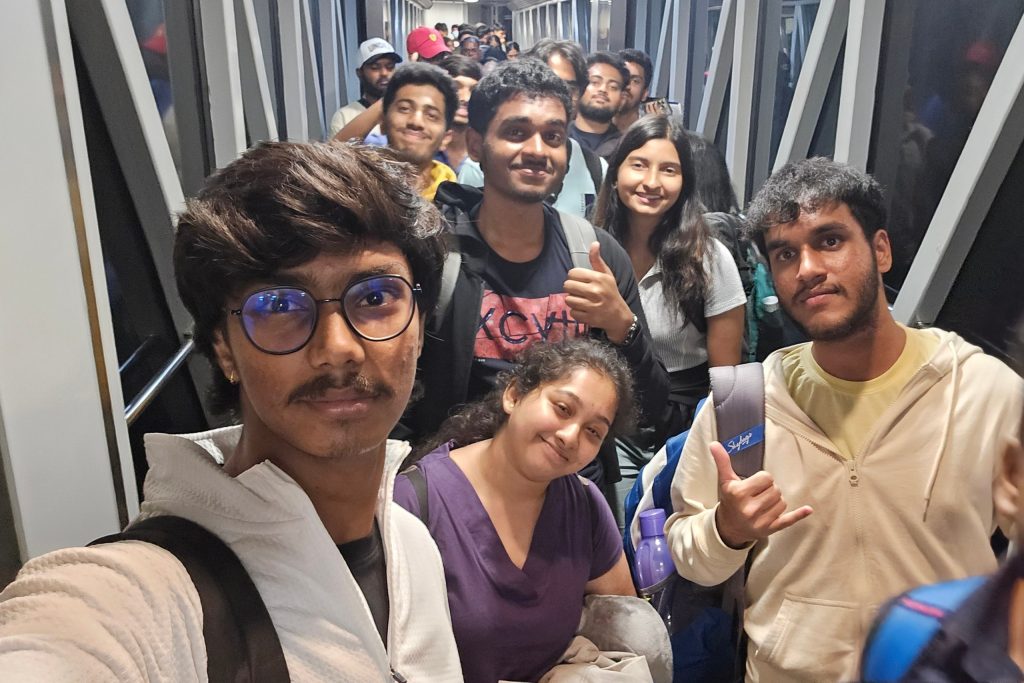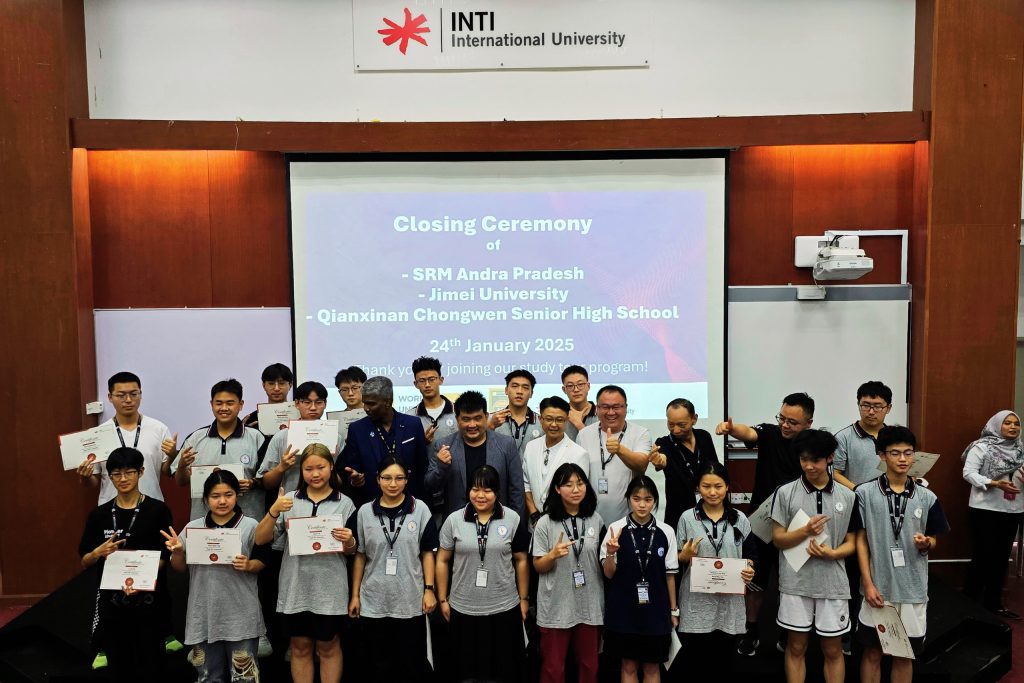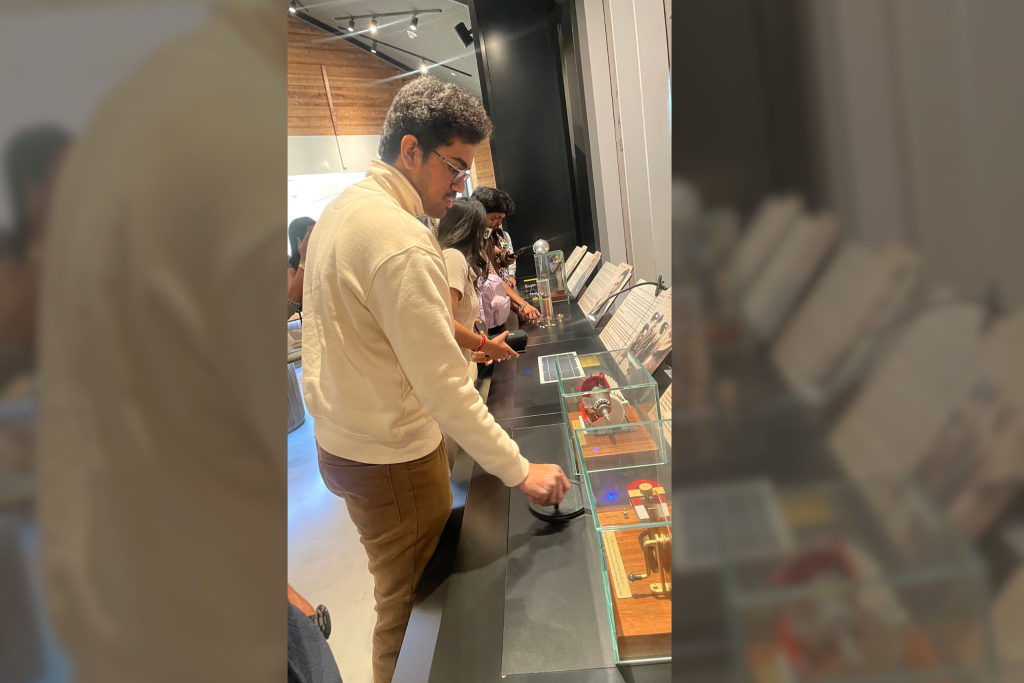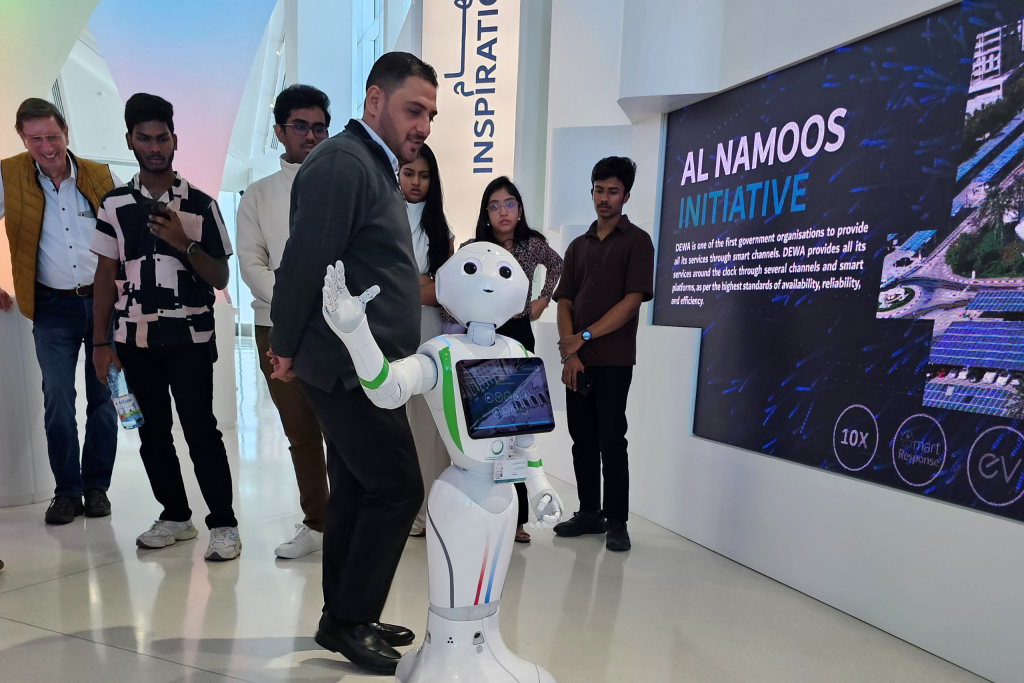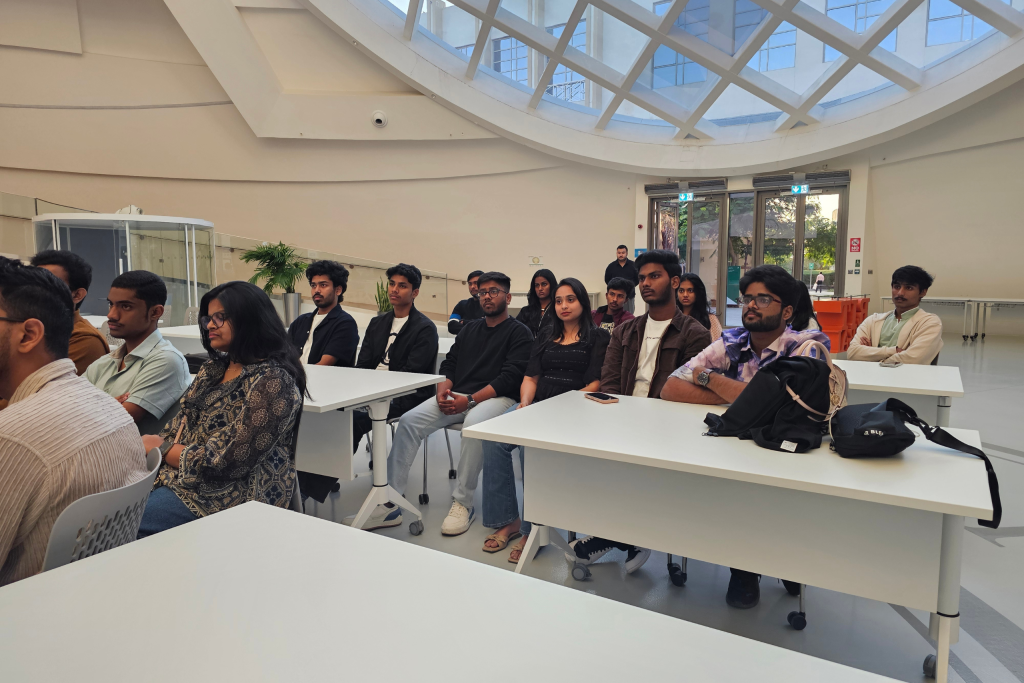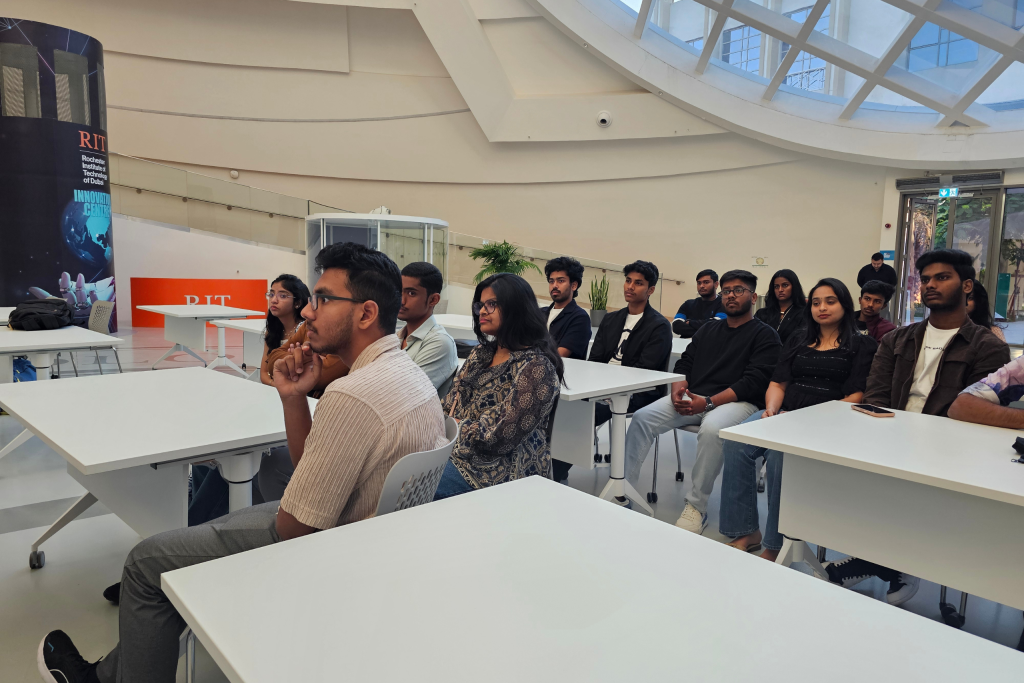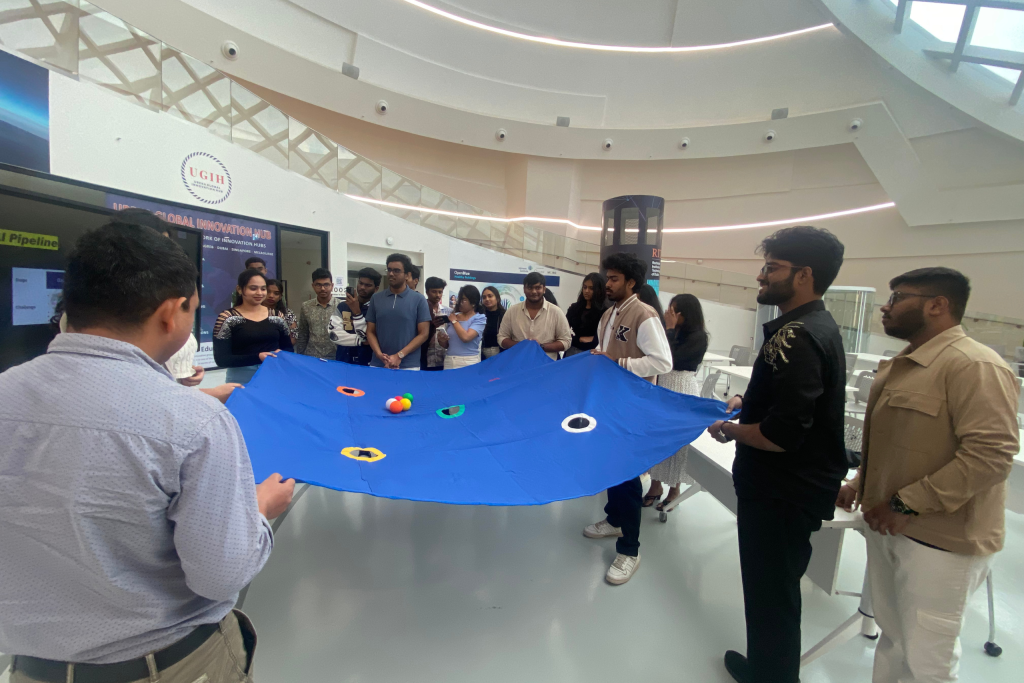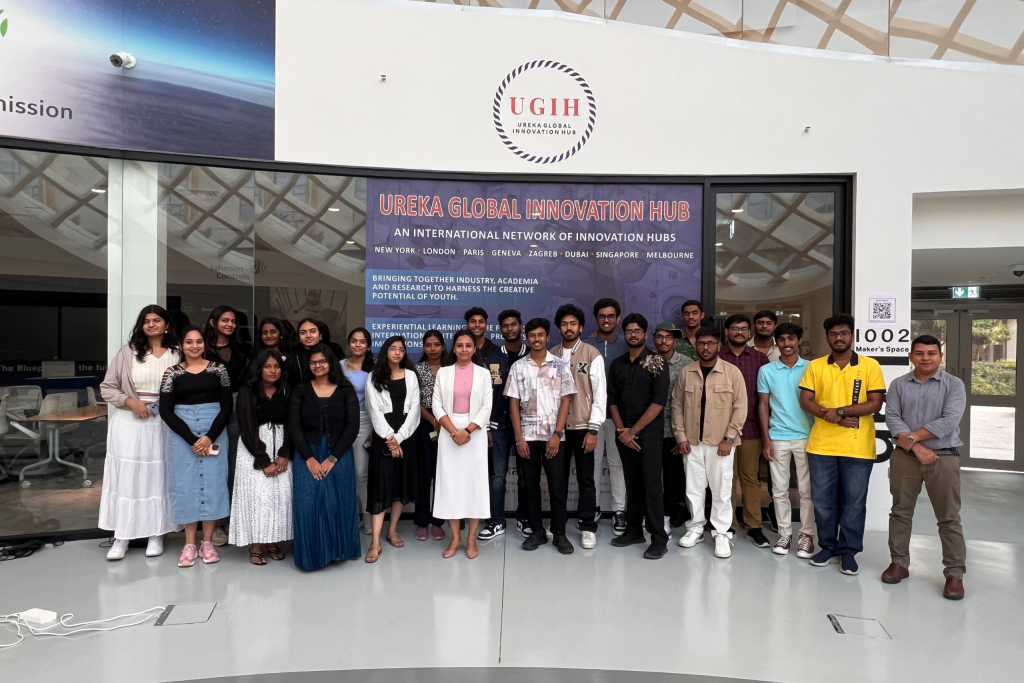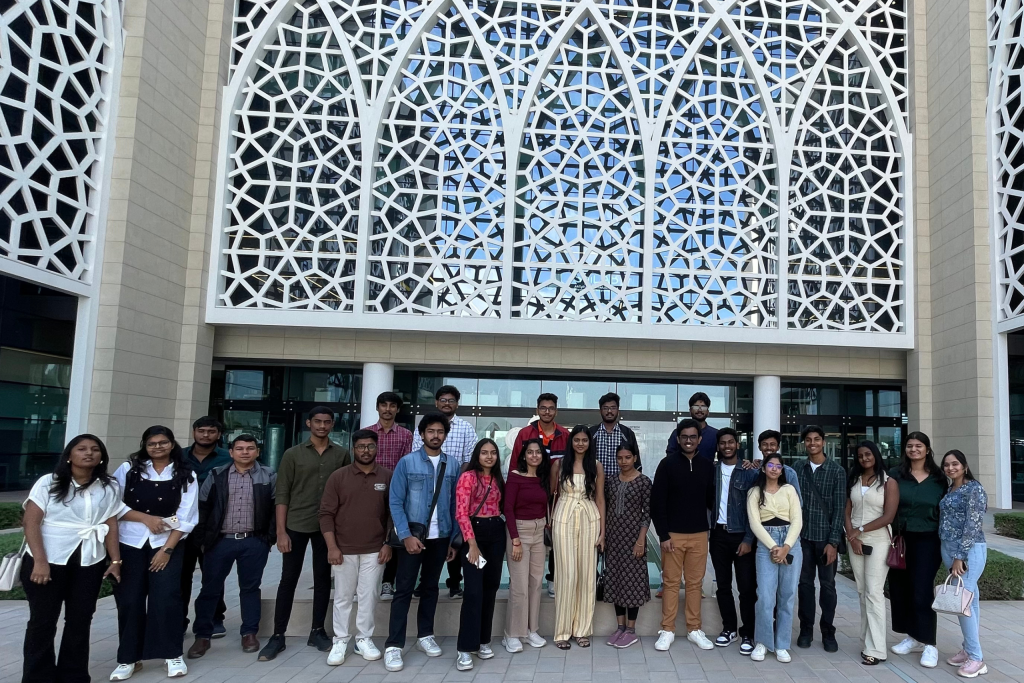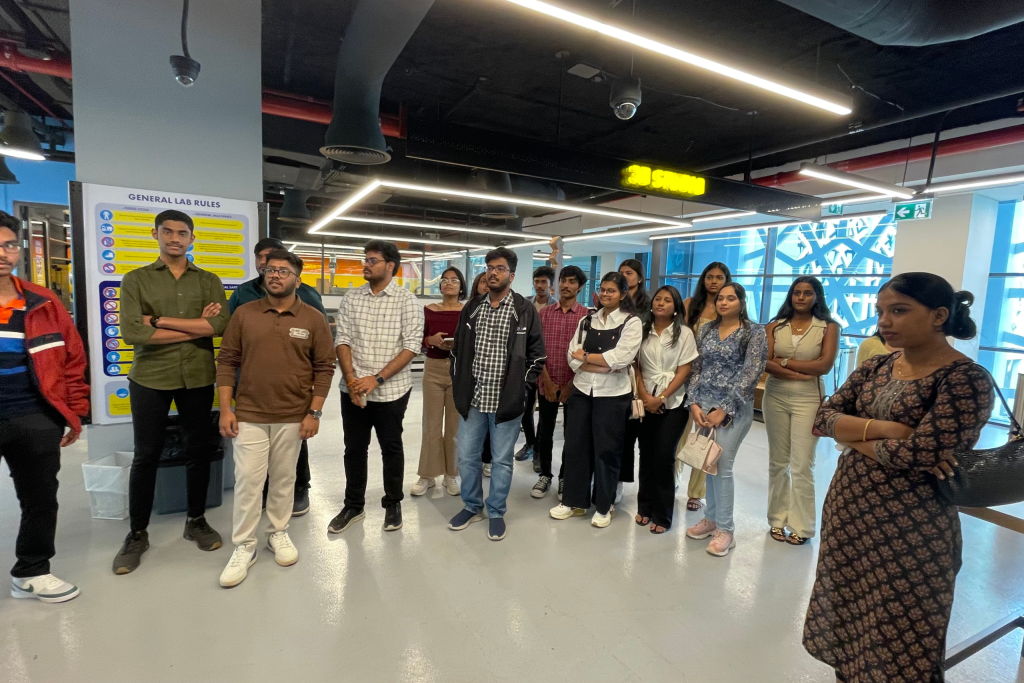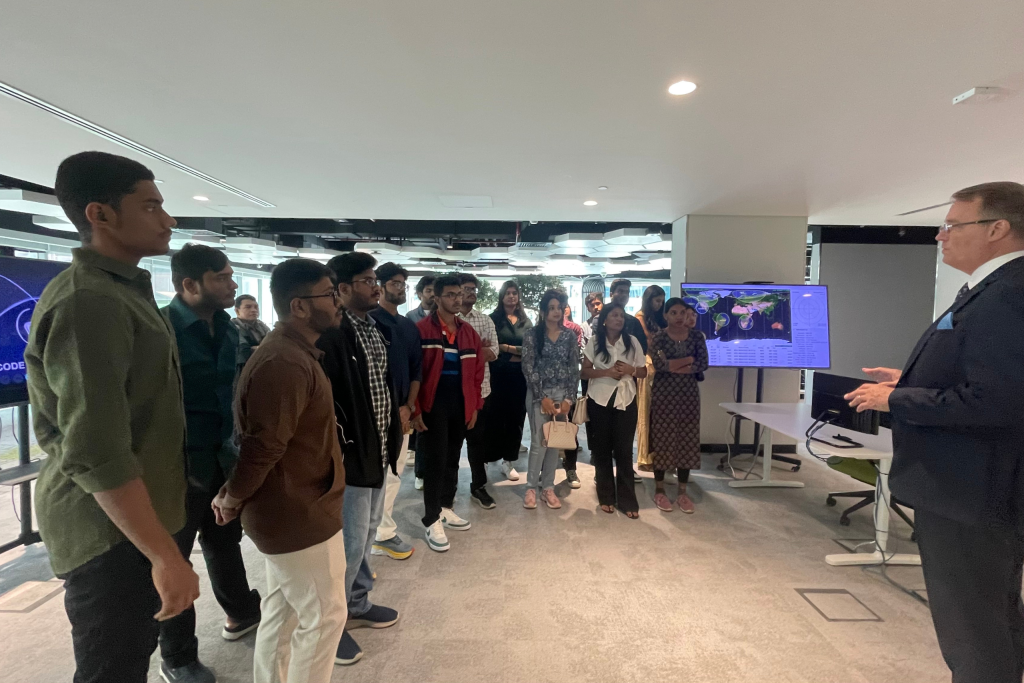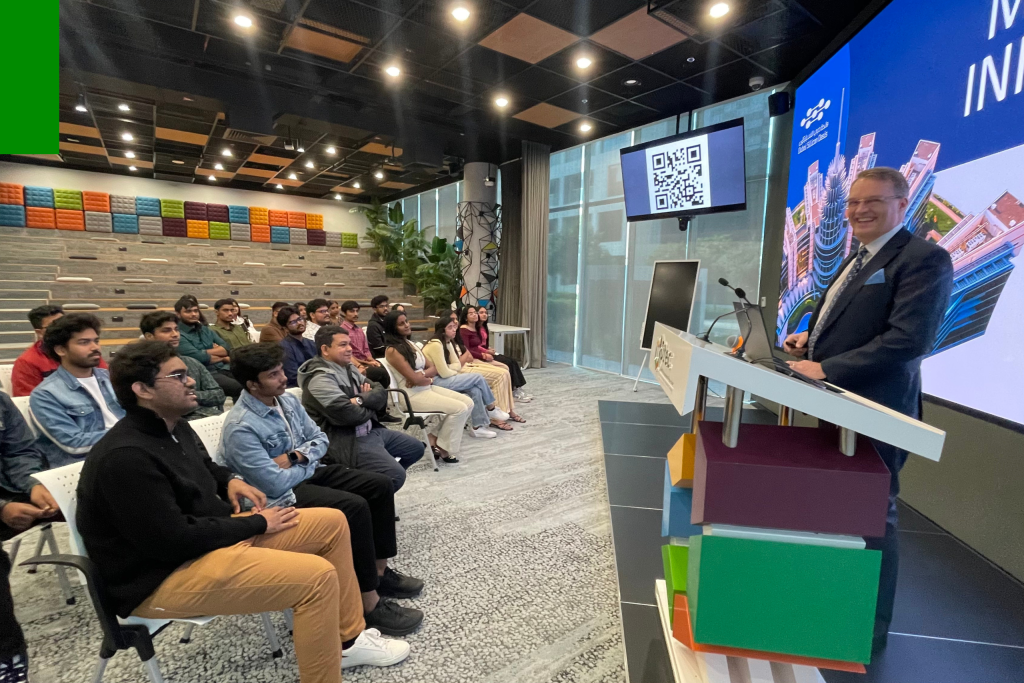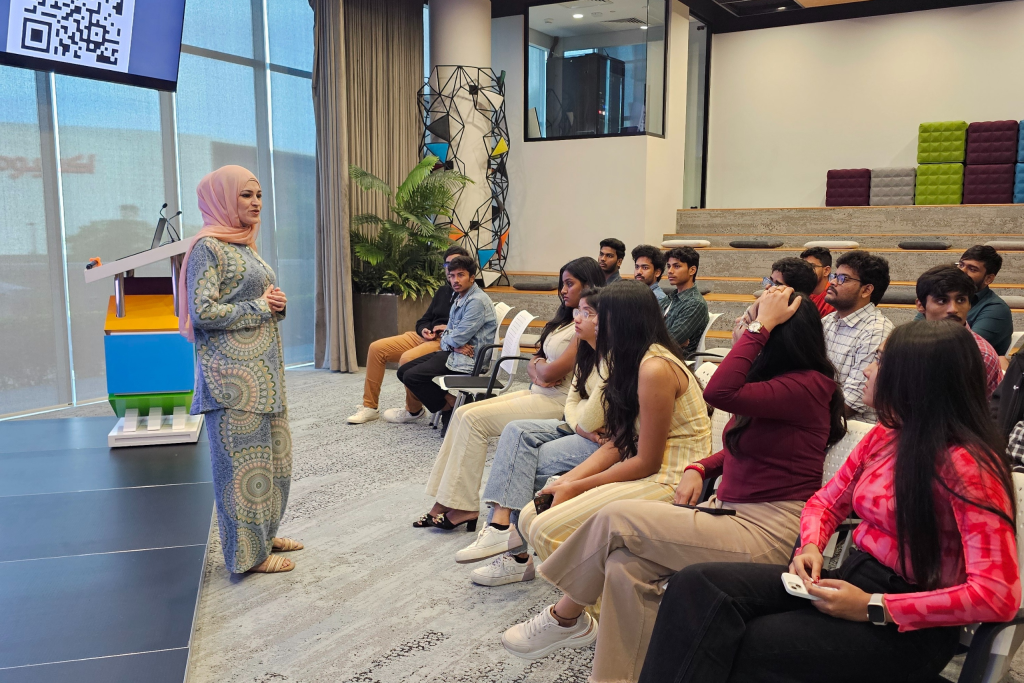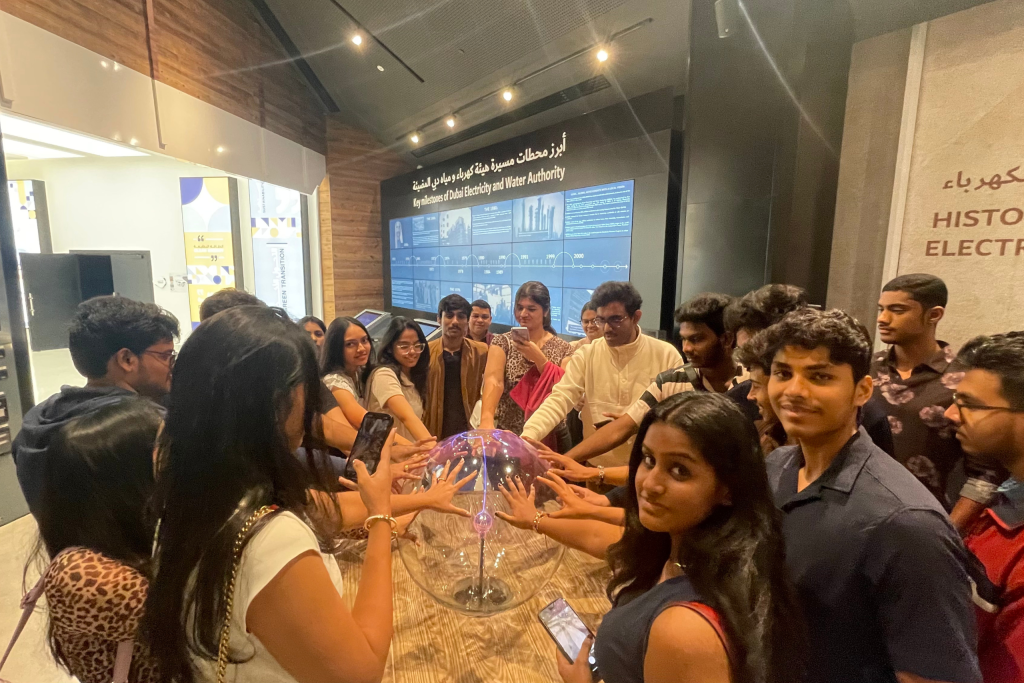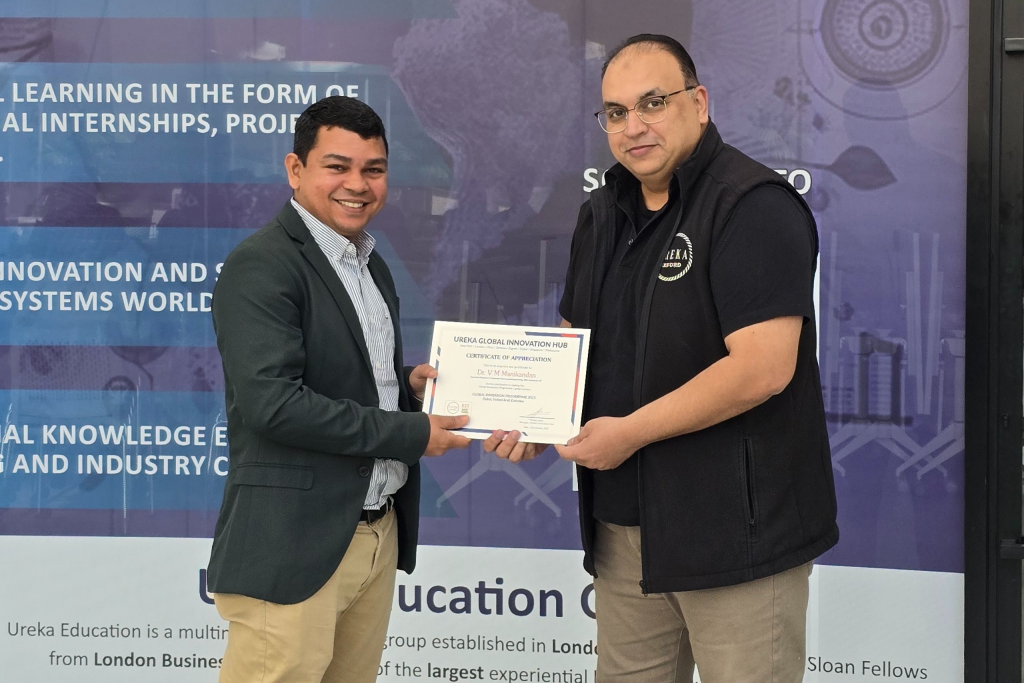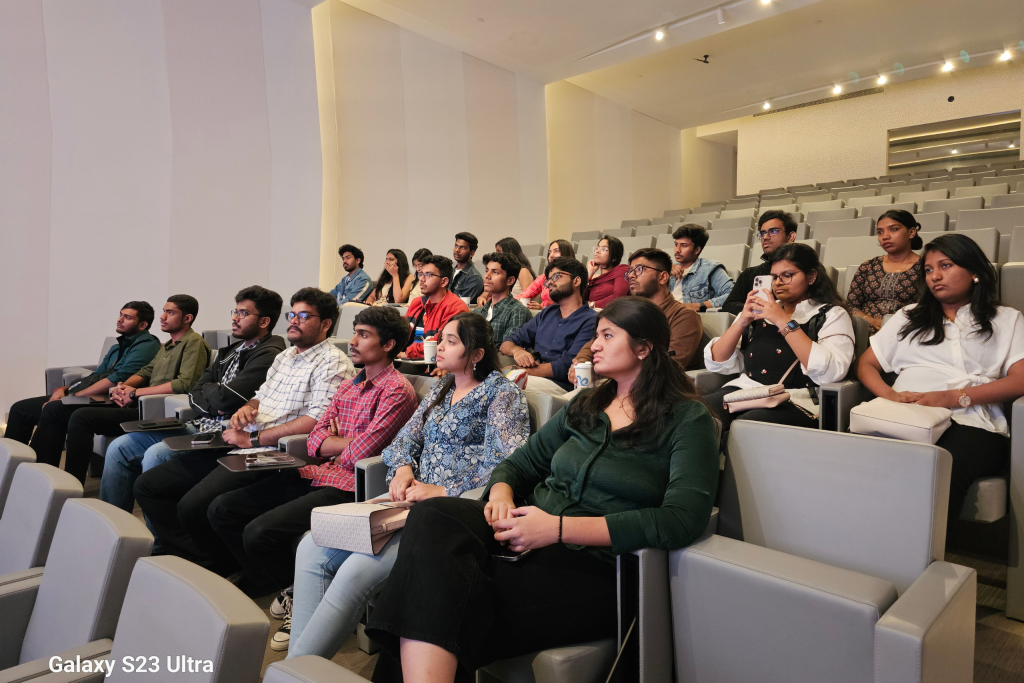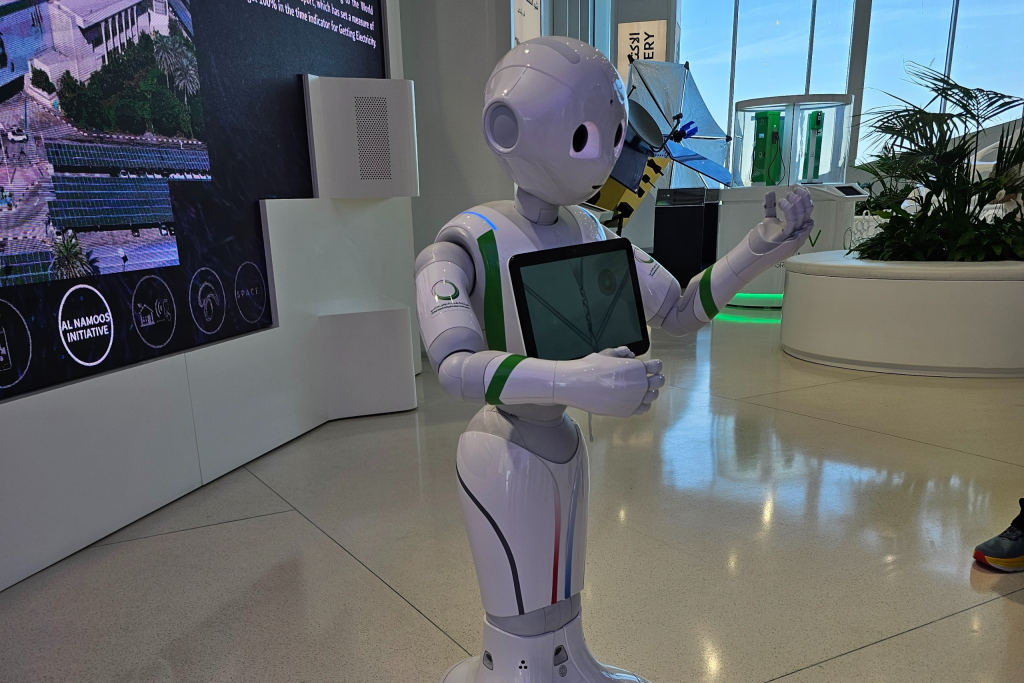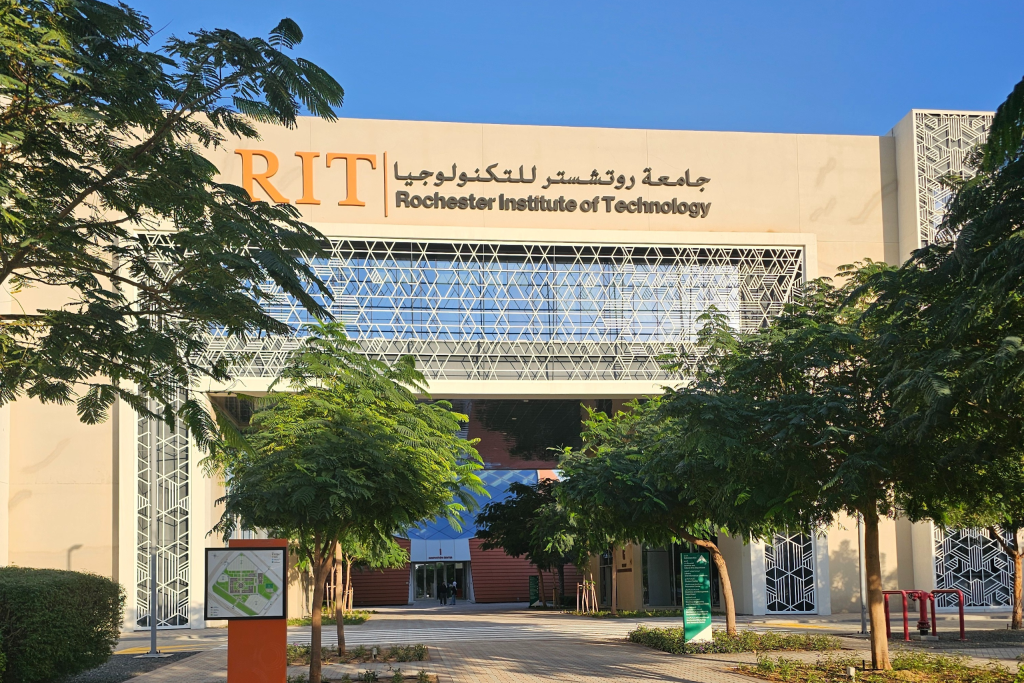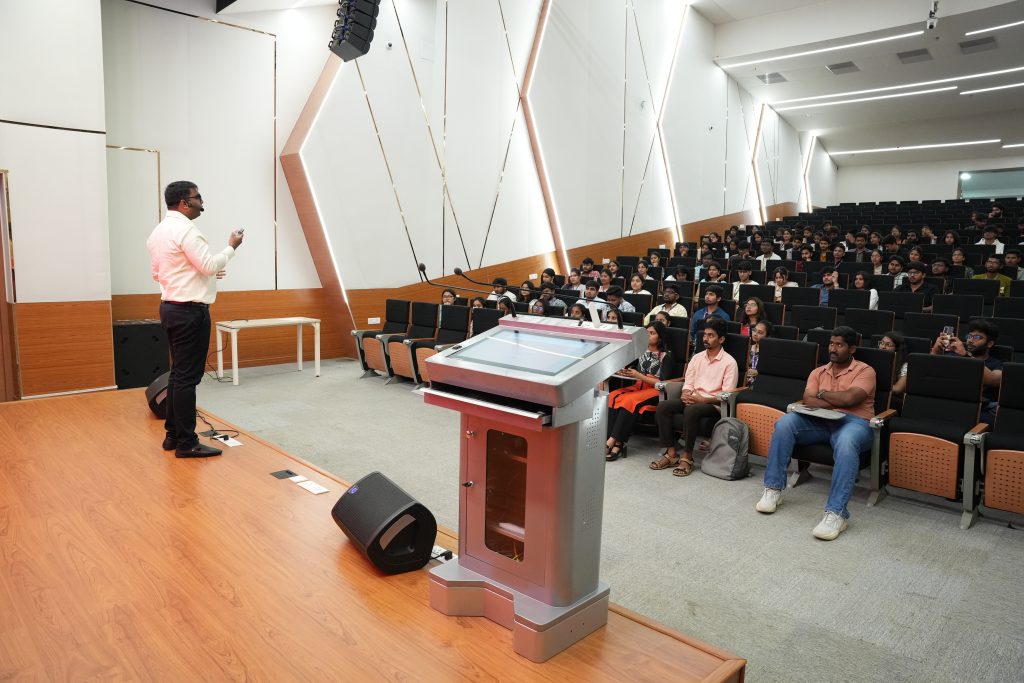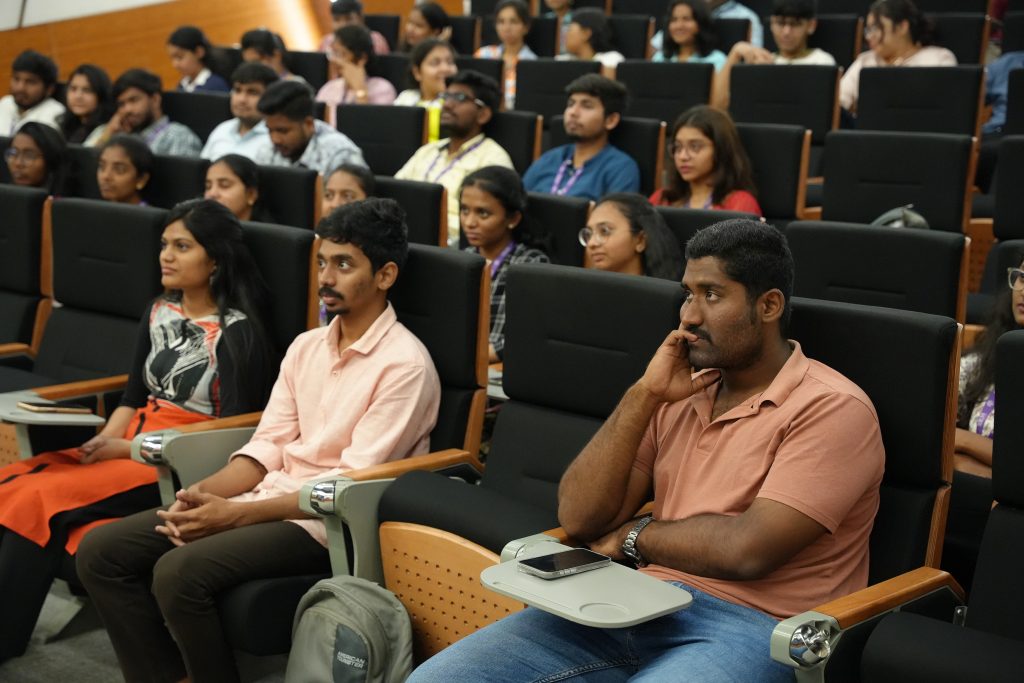SRM-AP All News
ALL News
- Alpine Secondary School March 10, 2025
SRM University-AP with its goal and vision of internationalization, also opens the door for the students who aspire to study in India. SRM AP being one of the known and finest universities in India would love to host students and staff across the globe. Its fascinating infrastructure, its globally accepted curriculum, its highly experienced faculties to its wider partnerships worldwide, give a magnificent opportunity to the students.
SRM University-AP welcomed the students and faculty of the Alpine Secondary School, Nepal to the rich cultural landscape of India through the Aadigyan – Summer Youth Program 2023. The 4-day program conducted by the Directorate of International Relations and Higher Studies was inaugurated by the honorable Vice Chancellor of SRM University-AP, Prof. Manoj K Arora, vishnupad mishra, Bharadhwaj Sivakumaran, Jatindra Kumar Dash, Jayaseelan Murugaiyan, Dr. Tousif Khan N, SMIEEE, MIE Dr.Srabani Basu Sidharth Tripathy, Mahesh Kumar Ravva, Ranjit Thapa
Ms. Adity Jain, Director of International Relations and Higher Studies, received the international students at the grand inaugural ceremony of the program. Students participated in various short courses on Future Prospects and Introduction Unraveling Future Pathways – Dr. Tousif Khan, HOD – EEE, Walk with the Scientist – Prof Jayaseelan Assoc Dean, SEAS-Sciences, Liberal Arts Unveiled: Navigating Future Avenues – Dr Srabani Basu, HOD – English, Business Insight: Today and Beyond – Prof A V S Kamesh, PSB, Building a Billion $ Company before you turn 18 – Mr Siddharth Tripathi Director – Entrepreneurship, Power of Habits – By Shri. Kirti Gopal Das, ISKCON, Taiwan Education Center Activity – Ms. Michelle Huang Taiwan.
They also got to visit the famous landmarks of Vijayawada, such as the Dhyana Buddha statue, Prakasham Barrage, Bhavani Island, etc. They have participated in Outdoor and Indoor Games with International Students.
Students interacted with many industry experts as they visited Hindustan Coca-Cola Beverages Pvt Ltd. Which gave them insights into the current trends and new technologies. The program also included interaction with the 160+ International students of SRM AP from more than 29 countries.
Continue reading →
The program ended on 21st Feb to 24th Feb 2024, with a valedictory session and facilitating faculty and students of Alpine Secondary School, Nepal. - Decimal College, Nepal March 10, 2025
SRM University-AP with its goal and vision of internationalization, also opens the door for the students who aspire to study in India. SRM AP being one of the known and finest universities in India would love to host students and staff across the globe. Its fascinating infrastructure, its globally accepted curriculum, its highly experienced faculties to its wider partnerships worldwide, give a magnificent opportunity to the students.
SRM University-AP welcomed the students and faculty of the Decimal College, Nepal to the rich cultural landscape of India through the Aadigyan – Summer Youth Program 2023. The 2 days program conducted by the Directorate of International Relations and Higher Studies was inaugurated by the honorable Vice Chancellor of SRM University-AP, Prof. Manoj K Arora,Bharadhwaj Sivakumaran, Jatindra Kumar Dash, Jayaseelan Murugaiyan.
The program ended on 26-Oct-23 & 27-Oct-23, with a valedictory session and facilitating faculty and students of Alpine Secondary School, Nepal. Director of International Relations and Higher Studies, received the international students at the grand inaugural ceremony of the program. Students participated in various short courses on Future Prospects and Introduction. Session.
Session by School of Science Faculty “Unveiling the World of Possibilities: Your Journey in Science at SRM University AP”. Session by Paari School of Business Faculty “Leadership and Innovation: Shaping Tomorrow’s Business World at SRM University AP”.
Session by International Relations & Highers Studies Department ” Global Horizons: Exploring International Opportunities and Higher Studies at SRM University AP. By School of Engineering Faculty”Exploring Your Academic Path: Engineering and Beyond at SRM University AP” and Art and Craft Workshop.
Students interacted with many industry experts as they visited Hindustan Coca-Cola Beverages Pvt Ltd. Which gave them insights into the current trends and new technologies. The program also included interaction with the 160+ International students of SRM AP from more than 29 countries.
Continue reading → - National Infotech College, Nepal March 10, 2025
SRM University-AP with its goal and vision of internationalisation, also opens the door for the students who aspire to study in India. SRM AP being one of the known and finest universities in India would love to host students and staff across the globe. Its fascinating infrastructure, its globally accepted curriculum, its highly experienced faculties to its wider partnerships worldwide, give a magnificent opportunity to the students.
SRM University-AP welcomed the students and faculty of the National Infotech College, Nepal to the rich cultural landscape of India through the Aadigyan – Summer Youth Programme 2023. The 4-day programme conducted by the Directorate of International Relations and Higher Studies was inaugurated by the honourable Vice Chancellor of SRM University-AP, Prof. Manoj K Arora. Aadigyan is a flagship initiative of the university to promote India’s cultural and knowledge traditions.
Dr Naga Swetha Pasupuleti, Director of International Relations and Higher Studies, received the international students at the grand inaugural ceremony of the programme. Students participated in various short courses on Future Prospects and Introduction -School of Liberal Arts, Introduction to Engineering Programs & Its Future Prospects – Dr Jatindra Dash, CSE Dr Ashu Abdul, CSE Prof. Prakash Jadhav, ME Dr Bhagat, Civil, Introduction to Business Studies & Its Future Prospects – Dr Kamesh.
They also got to visit the famous landmarks of Vijayawada, such as the Dhyana Buddha statue, Prakasham Barrage, Bhavani Island, etc. They have participated in Cricket / Football matches with on-campus International Students.
Students interacted with many industry experts as they visited Efftronics Systems Pvt Ltd, APIIC IT Park, Mangala Giri. Which gave them insights into the current trends and new technologies. The programme also included interaction with the 160+ International students of SRM AP from more than 29 countries.
The programme ended on Aug 04 to 07, 2023, with a valedictory session and facilitating faculty and students of National Infotech College, Nepal.
Continue reading → - SRM AP, Amaravati’s Landmark Collaboration with Carnegie Mellon University’s School of Computer Science, USA for AI Research, Education March 9, 2025

SRM AP, Amaravati, is proud to announce a transformative five-year collaboration with Carnegie Mellon University’s School of Computer Science (CMU SCS), USA-one of the world’s foremost institutions in artificial intelligence (AI) and cutting-edge research. This strategic collaboration aims to push the boundaries of knowledge, innovation and education in AI-related disciplines, including machine learning, natural language processing, computer vision, infrastructure and systems, and AI ethics and policy.
At the heart of this collaboration is a shared vision to foster an ecosystem that nurtures groundbreaking research, cultivates exceptional talent, and accelerates advancements in AI-driven technologies.
A Pioneering Collaboration for AI Excellence

“CMU’s School of Computer Science is excited to work with SRM AP, Amaravati, on this landmark collaboration to advance research and bolster AI education. Together, we will shape the future of AI and empower the next generation of researchers, educators and industry leaders to push the frontiers of technology and drive meaningful change in society,” said Prof. Martial Hebert, Dean of CMU’s School of Computer Science.
Empowering Research Through Global Collaboration
As part of this collaboration, SRM AP, Amaravati’s research faculty and researchers will have the opportunity to engage directly with the esteemed faculty and researchers at CMU’s School of Computer Science. They will immerse themselves in CMU SCS’s pioneering AI labs, working alongside global experts in key research domains. This will facilitate research, knowledge sharing and the development of state-of-the-art AI innovations that address real- world challenges.
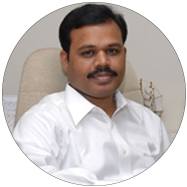
Dr P Sathyanarayanan, Pro-Chancellor of SRM AP, Amaravati, said that “To further strengthen research capabilities, this collaboration will also pave the way to establish advanced AI labs at SRM AP, Amaravati. These labs will be incubators for novel AI research, fostering a stimulating environment that promotes academic rigor, interdisciplinary collaboration and technological innovation”.
Advancing AI Education with World-Class Learning Opportunities
Beyond research, this collaboration is designed to enrich the academic experience of SRM AP’s teaching faculty and research scholars. Selected faculty members and scholars can audit cutting-edge AI courses at CMU’s School of Computer Science as visiting participants. This exposure will allow them to engage with CMU SCS faculty and contribute to developing robust AI curricula at SRM AP. They will also gain hands-on experience in designing assignments, worksheets and examinations that mirror real-world AI problem-solving scenarios, enhancing the quality of AI education at SRM AP, Amaravati,.
Unparalleled Research Internships for Students
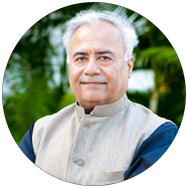
Prof. Manoj K Arora, Vice Chancellor expressed, “In a move that underscores its commitment to nurturing future AI leaders, the collaboration will offer SRM AP students the opportunity to undertake research internships at CMU’s School of Computer Science.”
Selected students will spend approx. six weeks each summer immersed in a world-class research environment, gaining firsthand experience in tackling complex AI challenges alongside leaders in the field. This experience will provide students with unparalleled insights and exposure to global research methodologies, setting them apart in the highly competitive AI landscape.
By leveraging CMU SCS’s expertise and SRM AP’s commitment to academic excellence, this collaboration will drive innovation, expand knowledge horizons and create a lasting impact on the AI ecosystem between the universities.
Continue reading → - Global Immersion: Cultural Exchange at INTI University, Malaysia March 7, 2025
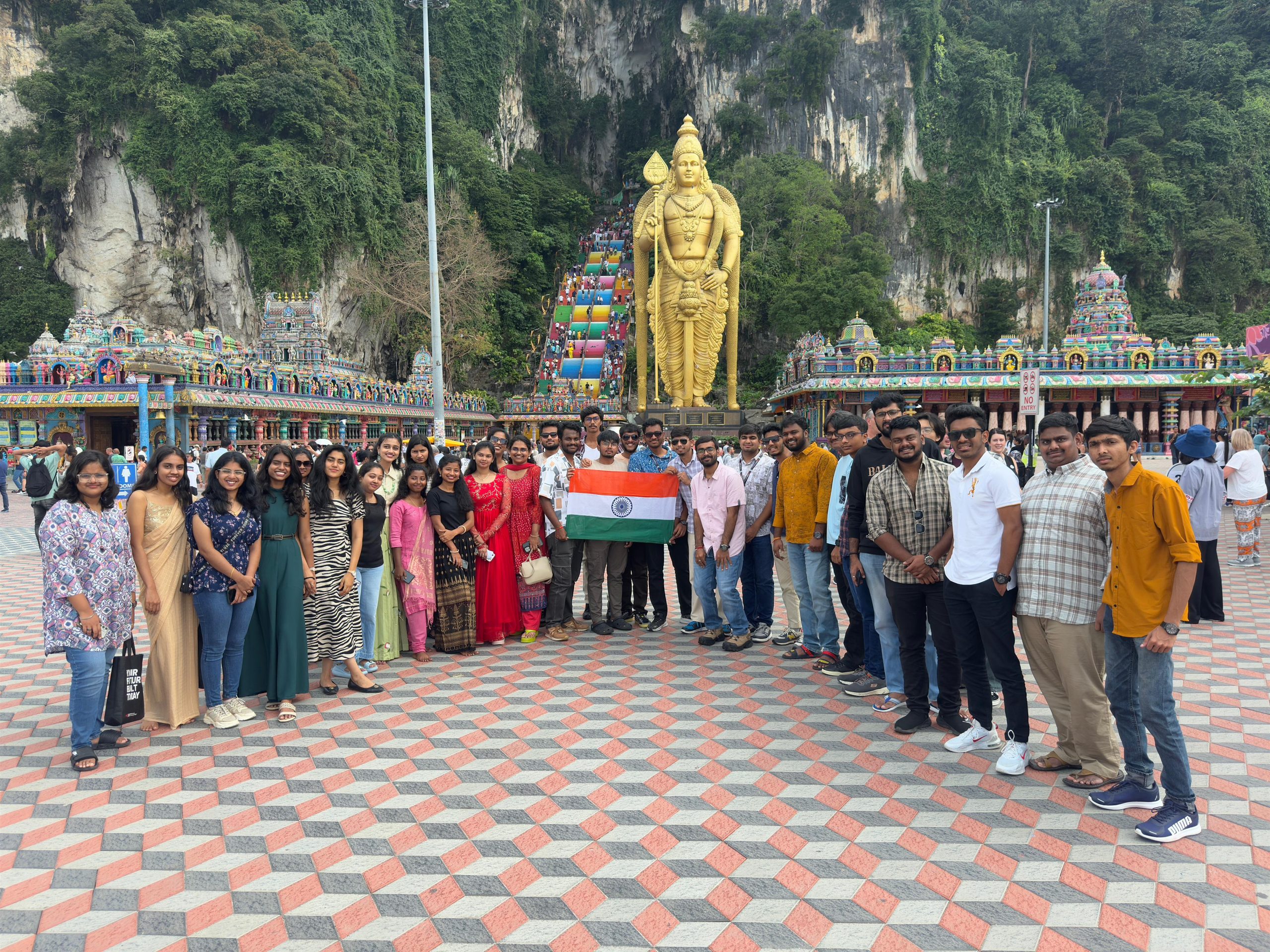
The Directorate of International Relations and Higher Studies (IR&HS) organised a Global Winter Immersion Programme for 32 students and 2 faculty members. The students from SRM AP‘s 3 schools—Paari School of Business, Easwari School of Liberal Arts, and School of Engineering and Sciences—set off for INTI International University, Malaysia.
The Immersion programme offered students an insight into the development and functioning of drone Technology. They were also able to learn how Unmanned Aerial Vehicles (UAV) are revolutionising the surveillance, agriculture, and logistics industry. They were also offered insights into Malaysia’s economy built on strategic trade industries, financial sector, and sustainability initiatives. The immersion programme offered a Physiotherapy Workshop for the students allowing them to understand rehabilitation techniques, injury prevention, and post-surgical recovery methods.
The immersion programme was not just about the academic aspect of student life but also exposed them to traditional Malaysian and Chinese culture through its music, food, games, and the engaging interactions and friendships fostered when native Chinese, Malaysians, and Indians interacted with the students from SRM AP. Immersion programmes such as these not only broaden students’ horizons but also equip them with a wealth of global perspectives.
Continue reading → - A New Lens on Education: SRM AP’s Global Immersion Programme March 7, 2025
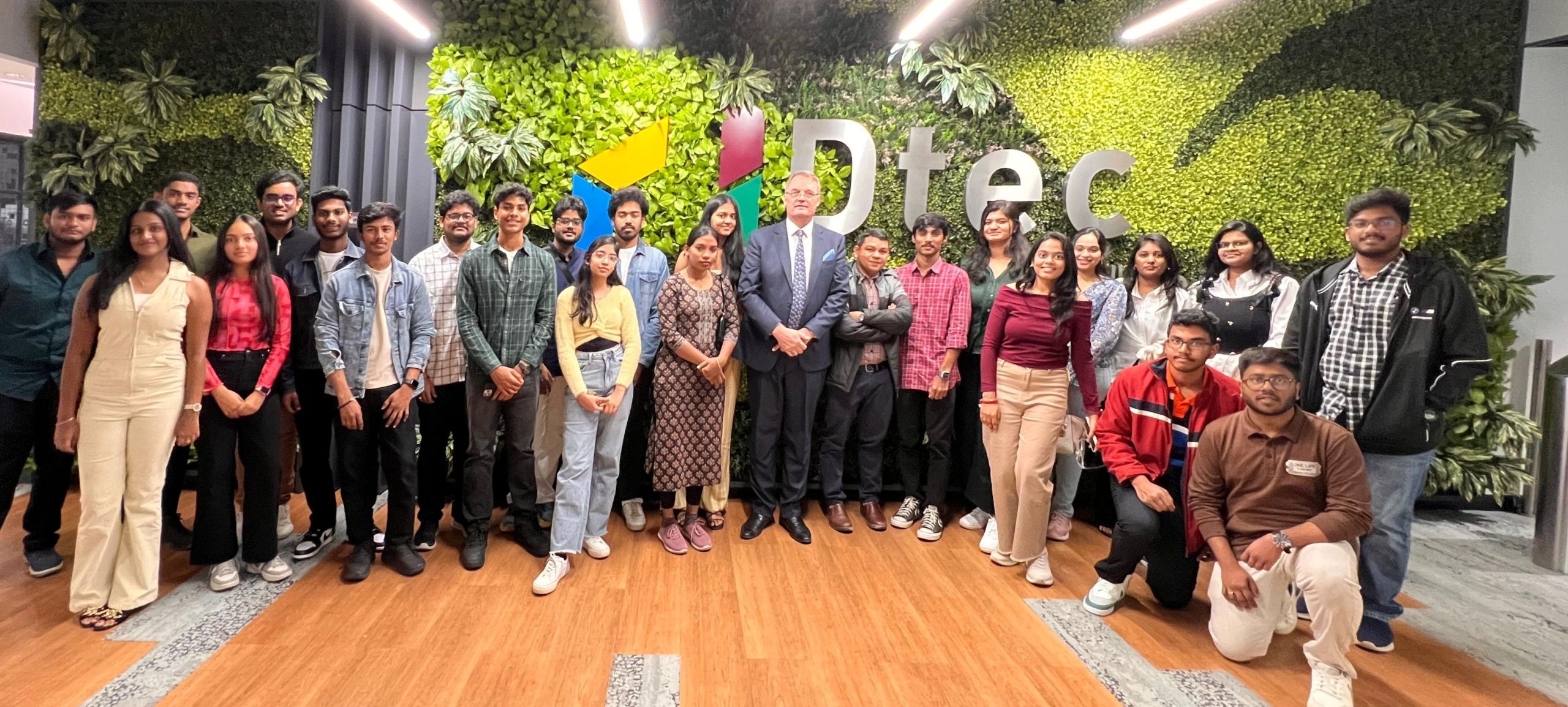 The Directorate of International Relations and Higher Studies’ (IR&HS) flagship event – the Winter Immersion Programme was organised in Dubai this year. The immersion programme was held in collaboration with Ureka Education Group, from January 06-12, 2025. The programme saw the participation of 22 enthusiastic students accompanied by a faculty member from the Department of Computer Science and Engineering.
The Directorate of International Relations and Higher Studies’ (IR&HS) flagship event – the Winter Immersion Programme was organised in Dubai this year. The immersion programme was held in collaboration with Ureka Education Group, from January 06-12, 2025. The programme saw the participation of 22 enthusiastic students accompanied by a faculty member from the Department of Computer Science and Engineering.During the event participants engaged in intellectually stimulating workshops at renowned research and entrepreneurial centres like – Rochester Institute of Technology (RIT), Dubai Technology and Entrepreneurship Campus (DTEC), and DEWA Innovation Centre, wherein they gained practical insights and technical know-hows in the field of research, innovation and entrepreneurial development. Students also got a first-hand chance to experience a new perspective on the culture and heritage of the country as they visited Masdar City, Sheikh Zayed Grand Mosque, and Global Village.
The immersion programme also allowed students to present their learnings from the trip in the form of presentations at RIT, wherein they also received participation certificates. The immersion programme fostered global perspectives, networking opportunities, and future-ready skills, empowering SRM AP students to excel in their careers.
Continue reading → - Guest Talk on an Overview of HR in Corporate March 6, 2025
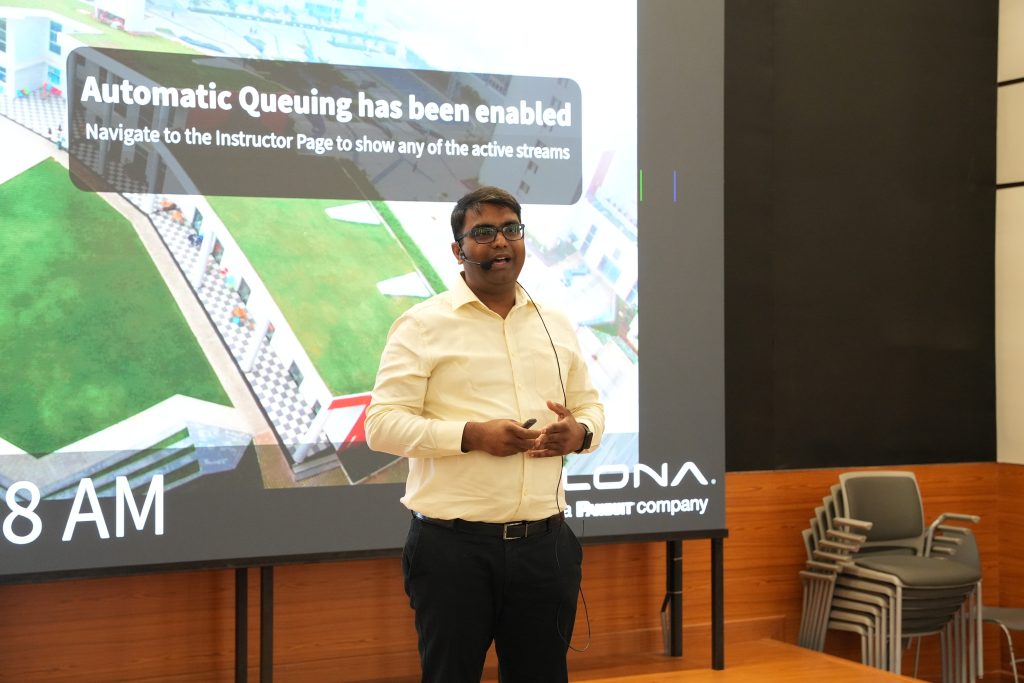
The Department of Management organised a Guest Talk on “Business Communication; Overview of HR Department in a Corporate”. Mr Sannu Francis, General Manager of Orient Cement, delivered the session on the role of HR as a strategic partner, aligning talent management with overall business objectives.
Mr Francis remarked that the role of HR begins with manpower planning; determining the right number of employees, structuring budgets, and forecasting production needs based on market trends. HR is responsible for recruiting and onboarding the right talent through sourcing, competency-based interviews, and psychometric testing. Once onboard, HR focuses on developing employees through training and learning initiatives that enhance knowledge, skills, and attitudes. It manages performance by setting clear goals, conducting mid-year reviews, and overseeing annual appraisals, ensuring fairness and objectivity.
Additionally, he stated that HR administers compensation, benefits, and statutory payments while upholding compliance and legal standards. Beyond these functions, Mr Francis said that effective communication: verbal, nonverbal, written, and visual; is key to fostering strong relationships and engagement within the organization, making HR indispensable for driving business success.
The session gave a comprehensive overview of the significance of HR in a Corporate and the importance of business communication.
Continue reading → - Exploring Composite Structures with Dr Subbareddy Daggumati March 3, 2025
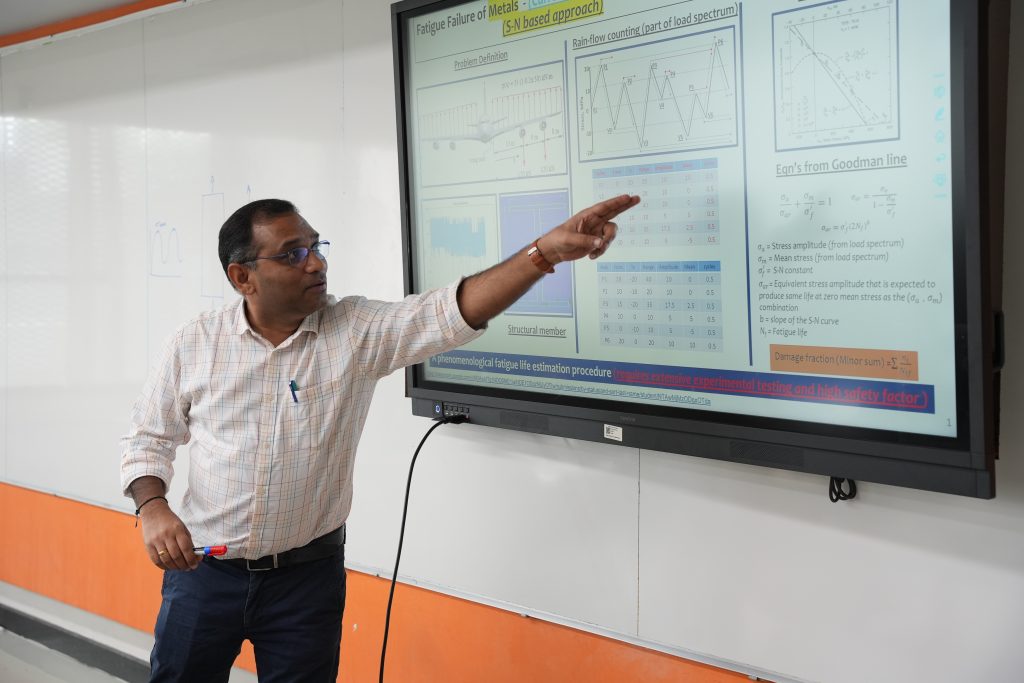
The Department of Mechanical Engineering hosted an invited talk on “Design of Composite Structures” on February 27, 2025. The session was delivered by Dr Subbareddy Daggumati, distinguished Associate Professor of the Department of Mechanical Engineering at Indian Institute of Technology (IIT) Tirupati, Andhra Pradesh, India. An expert in composite materials, structural mechanics, and computational modelling, Dr Subbareddy Daggumati, highlighted the significance of composite materials in aerospace, automotive, and structural applications in his talk.
The presentation covered key topics such as fatigue damage mechanisms, experimental analysis, predictive modelling, and recent advancements in composite material research. Participants, including faculty members, researchers, and students, actively discussed improving fatigue resistance through material selection, design optimization, and advanced testing techniques. A leading figure in advanced engineering research, Dr Subbareddy Daggumati also underscored the extensive research opportunities available for faculty, research scholars, and students interested in exploring the fatigue behaviour of composite structures. The event was highly informative, fostering academic exchange and encouraging further research into the fatigue behaviour of composite structures.
The event was presided over by Dr Lakshmi Sirisha Maganti, Head of the Department of Mechanical Engineering and Prof. Prakash Jadhav, Professor of the Department of Mechanical Engineering. The talk concluded with an interactive Q&A session, where attendees gained valuable knowledge on current challenges and future research directions in this field.
Continue reading → - “A New Dawn of Water Sustainability”: 1st Water Elixir Meet 2025 March 3, 2025
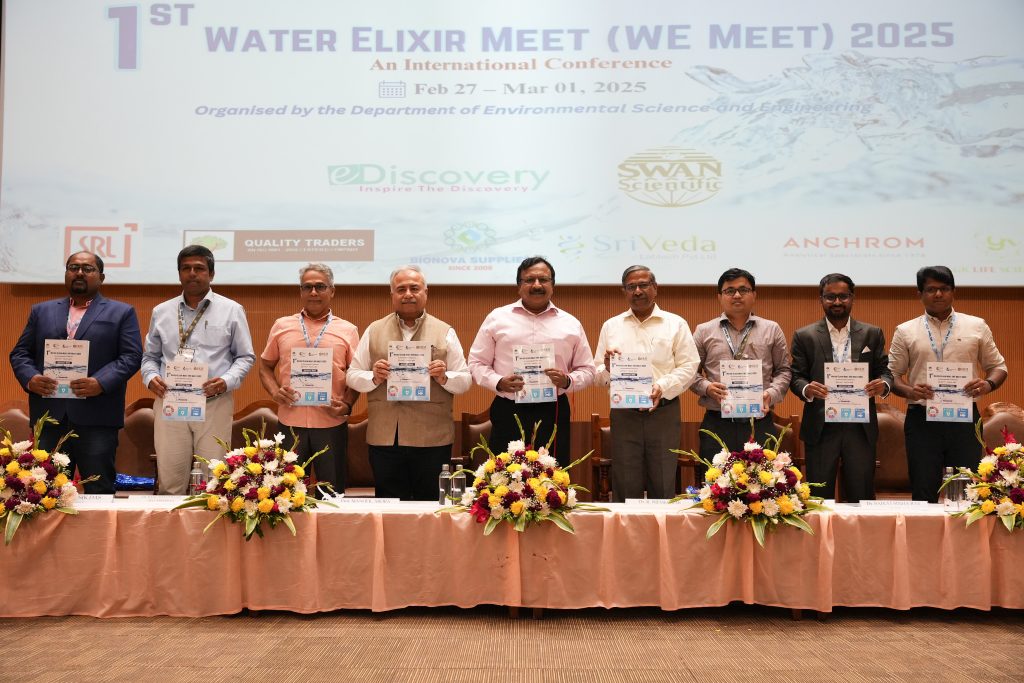
The Department of Environmental Science and Engineering hosted the 1st Water Elixir Meet (WE Meet 2025), a three-day international conference bringing together global minds to address one of the world’s most pressing challenges: water sustainability and security on Feb 27 – Mar 01, 2025. The conference was inaugurated by Prof. Rajasekhar Balasubramanian, Provost’s Chair Professor Group Head (Hydraulics, Hydrology and Climate Resilience), Department of Civil and Environmental Engineering, National University of Singapore.
“The available water quantity is decreasing, and the water quality is declining. There is a dire need to look into these parameters holistically and not separately. The We Meet 2025 is an ideal platform where scientists, researchers, policymakers, and industry leaders converge to address and manage global water resources efficiently and strategically,” stated Prof. Rajasekhar in his inaugural address.
WE Meet 2025 brought together more than 150 research abstracts and an esteemed lineup of global speakers, sharing groundbreaking insights into water resources, hydrogeology, and environmental sustainability. Prof. Kwang Ho-Choo from Kyunpook National University, South Korea, Prof. Shiao-Shing Chen from National Taipei University of Technology, Taiwan, Prof. Fulvia Chiampo from Politecnico di Torino, Italy, were some of the notable international speakers who delivered keynote sessions at the conference.
Prof. Manoj K Arora, Vice Chancellor, remarked beyond academic and research possibilities, WE Meet 2025 aimed at fostering global partnerships, innovative solutions, and cultural exchange. He stated, “WE Meet 2025 is a timely conference organised to address critical issues such as water resource management and water conservation.” Dr Rangabhashiyam Selvasembian, Head of the Department of Environmental Science and Engineering, also opined that this groundbreaking gathering fosters dialogue for impact. He said that the conference is a testament to the power of creative action in securing a sustainable tomorrow.
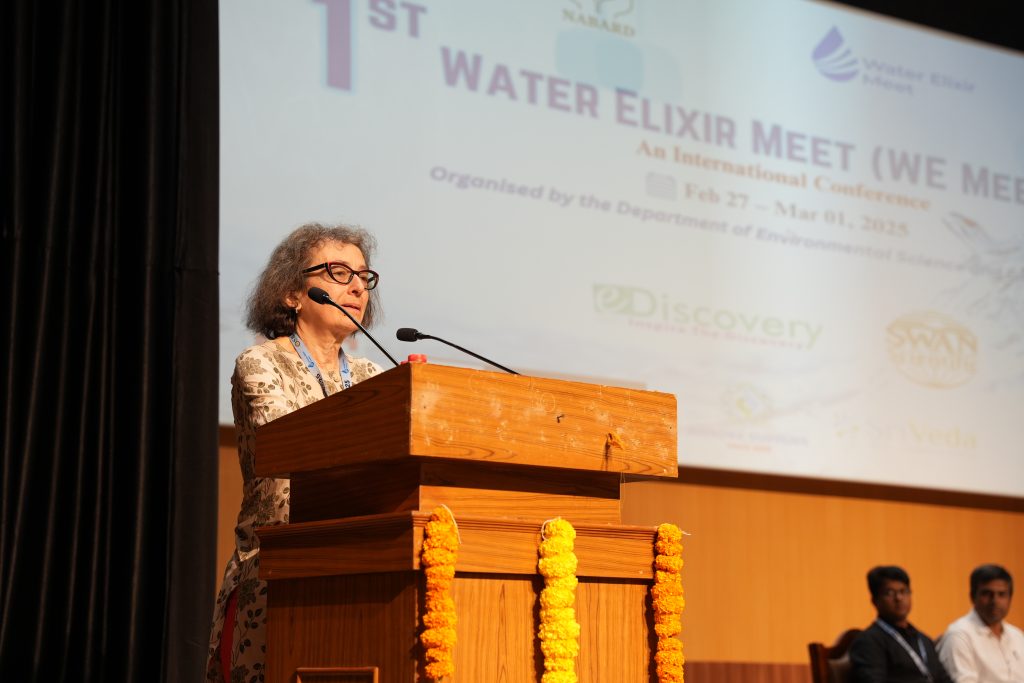
By showcasing cutting-edge technologies and driving policy advancements, WE Meet 2025 at SRM University-AP serves as a catalyst for real-world change. Exemplary research works such as the Best Oral Presentation and the Best Poster Presentation, were awarded top prizes at the valedictory ceremony. The conference also saw the participation of Registrar Dr R Premkunar, Dean – School of Engineering and Sciences, Prof. C V Tomy, Dean–Research, Prof. Ranjit Thapa, faculty, scholars and students of the varsity.
As the world grapples with increasing water challenges, this landmark international conference paves the way for a transformative journey to secure the future of water.
Continue reading → - Trio Publish Patent on VR Based Therapy Systems February 28, 2025
 The Department of Psychology at SRM University-AP is proud to announce the publication of the patent titled, “A System for VR-Based Psycho-Oncology Therapy with Real-Time Biofeedback and Cultural Adaptation” by Dr Ayesha Parveen Haroon and her Research Scholars-Ms Brilly Anto and Ms Keziah Mariyam Simon. This groundbreaking research introduces a virtual reality therapy system that integrates real-time biofeedback.
The Department of Psychology at SRM University-AP is proud to announce the publication of the patent titled, “A System for VR-Based Psycho-Oncology Therapy with Real-Time Biofeedback and Cultural Adaptation” by Dr Ayesha Parveen Haroon and her Research Scholars-Ms Brilly Anto and Ms Keziah Mariyam Simon. This groundbreaking research introduces a virtual reality therapy system that integrates real-time biofeedback.Abstract
This research introduces a VR-based psycho-oncology therapy system that integrates real-time biofeedback and cultural adaptation to enhance the psychological well-being of cancer patients. The system utilizes virtual reality to create immersive therapeutic environments while continuously monitoring physiological indicators such as heart rate variability (HRV), skin conductance response (GSR), and respiratory rate to assess stress levels in real time. A processing unit analyzes this data using stress detection algorithms and selects personalized therapeutic interventions, including guided imagery, music therapy, mindfulness practices, and culturally relevant content. The system adapts dynamically to patient responses, ensuring an individualized approach to mental health support. Additionally, a cloud-based module securely stores therapy metrics for long-term monitoring and personalized care adjustments. This innovation offers a patient-centred, technology-driven intervention that enhances mental health outcomes, improves treatment adherence, and provides accessible psychological support for cancer patients in both clinical and home settings.
Explanation in layperson’s terms.
Cancer treatment can be emotionally challenging, leading to stress, anxiety, and depression. This research introduces a Virtual Reality (VR)-based therapy system that helps patients relax and manage stress through immersive environments like calming landscapes and guided meditation. The system monitors heart rate, breathing, and stress levels in real time and automatically adjusts therapy by playing soothing music, guided imagery, or relaxation exercises. It also includes culturally relevant content, making therapy more personalized and accessible, even for patients in remote areas. In short, this system acts as a virtual therapist, offering personalized mental health support to cancer patients during treatment and recovery.
Practical Implementation & Social Impact
Practical Implementation
Used in hospitals, cancer centers, and home-based care for stress management.
Helps psycho-oncologists and mental health professionals provide personalized therapy.
Supports palliative care and extends telehealth access to remote areas.
Social Implications
• Reduces stress and anxiety in cancer patients, improving their quality of life.
• Increases accessibility to mental health support, especially in underserved areas.
• Enhances treatment adherence by promoting emotional well-being.
• Offers culturally relevant therapy, making interventions more relatable and effective.
This system bridges the gap in psycho-oncology care, making mental health support more engaging, accessible, and personalized.
Future Research Plans
• Enhancing VR therapy with AI-driven personalization.
• Integrating EEG-based biofeedback for stress monitoring.
• Developing affordable, portable VR solutions for remote care.
• Conducting clinical trials for validation.
• Expanding telehealth access for home-based psycho-oncology care.
Continue reading →



